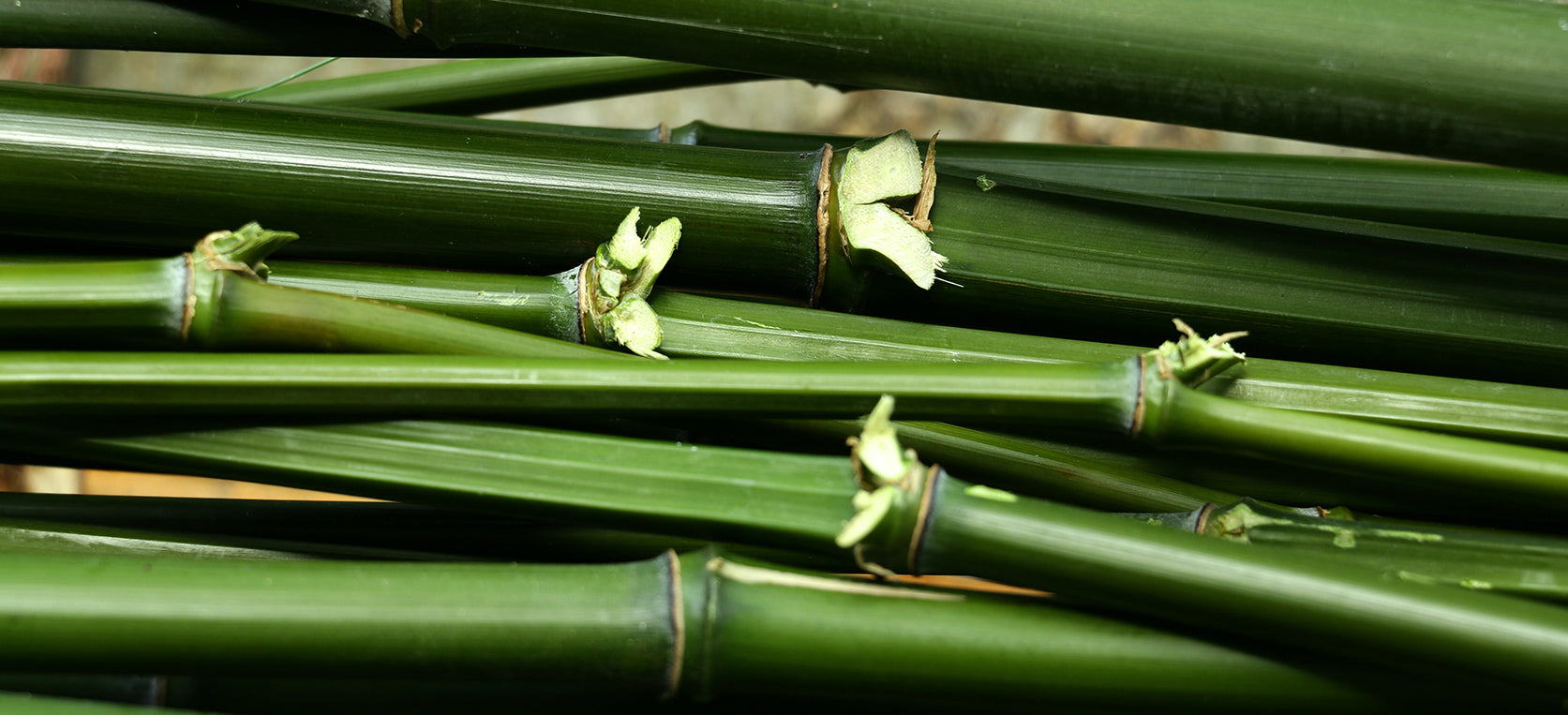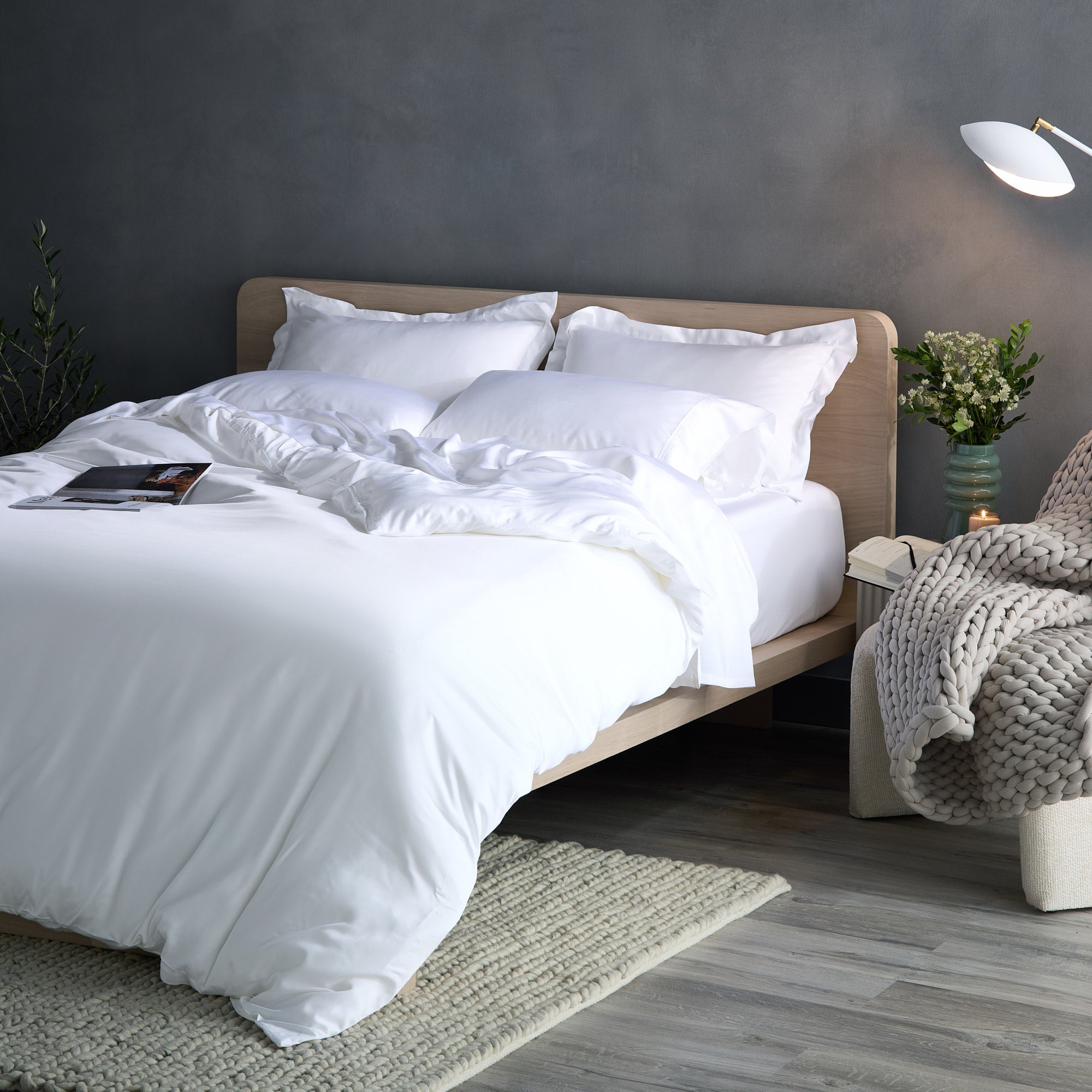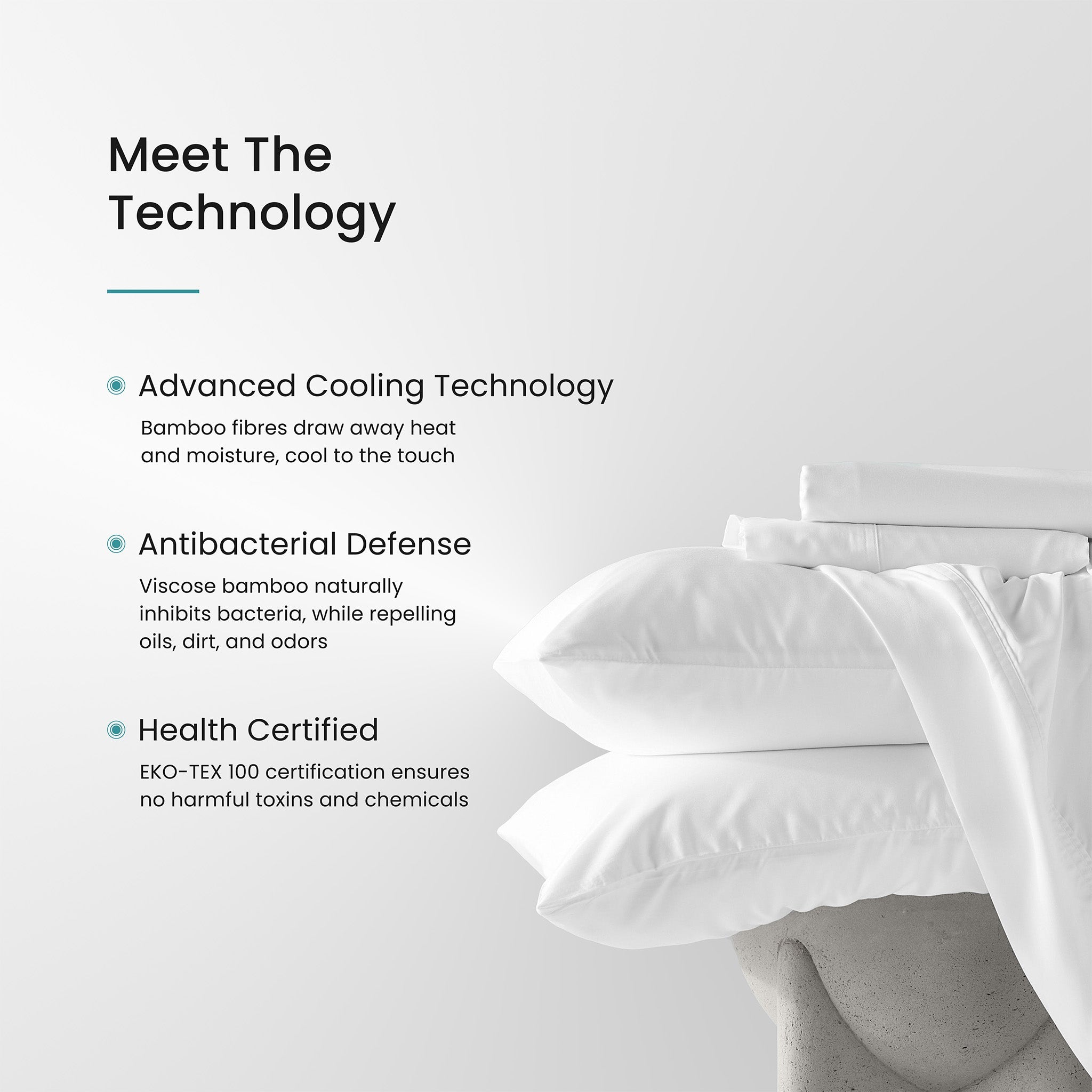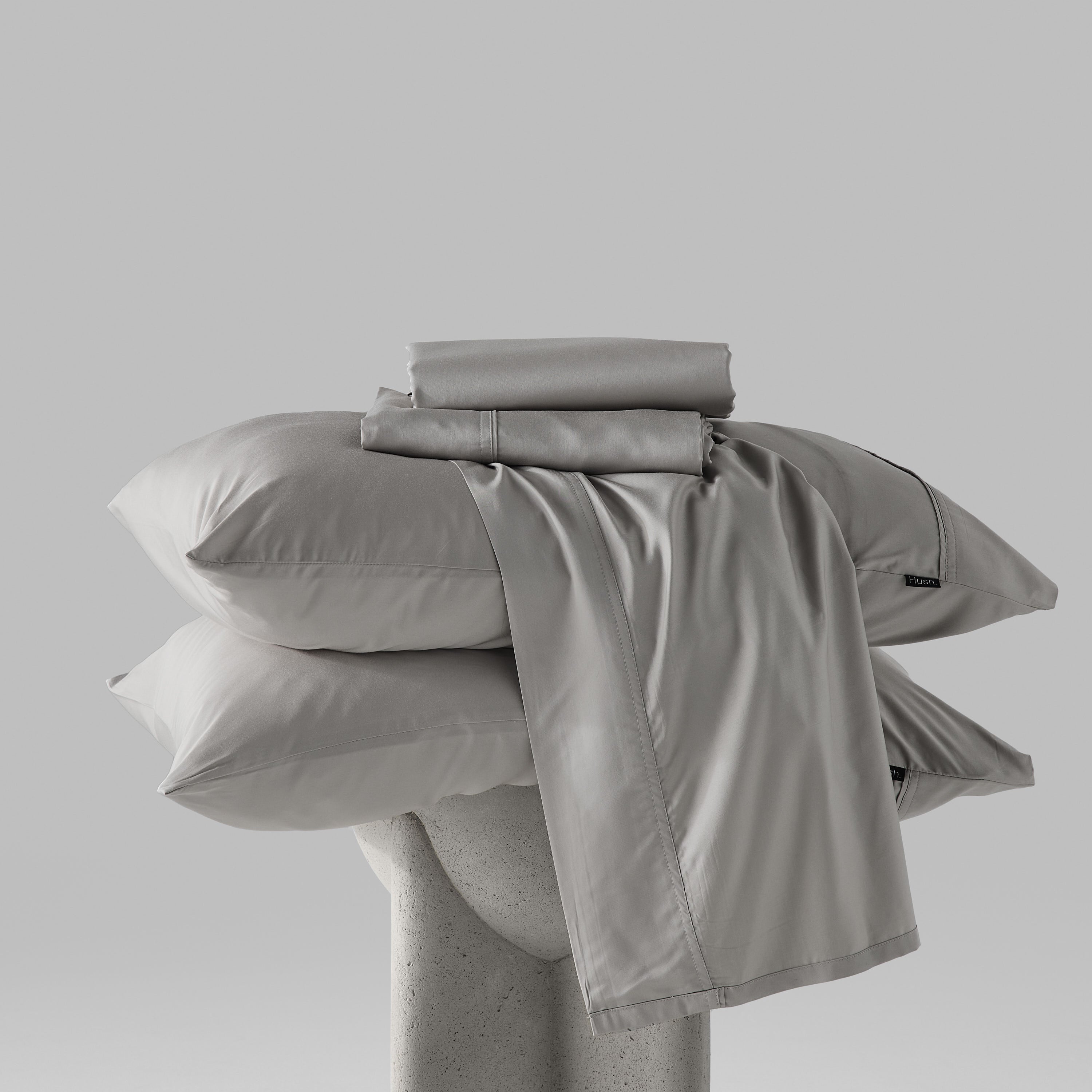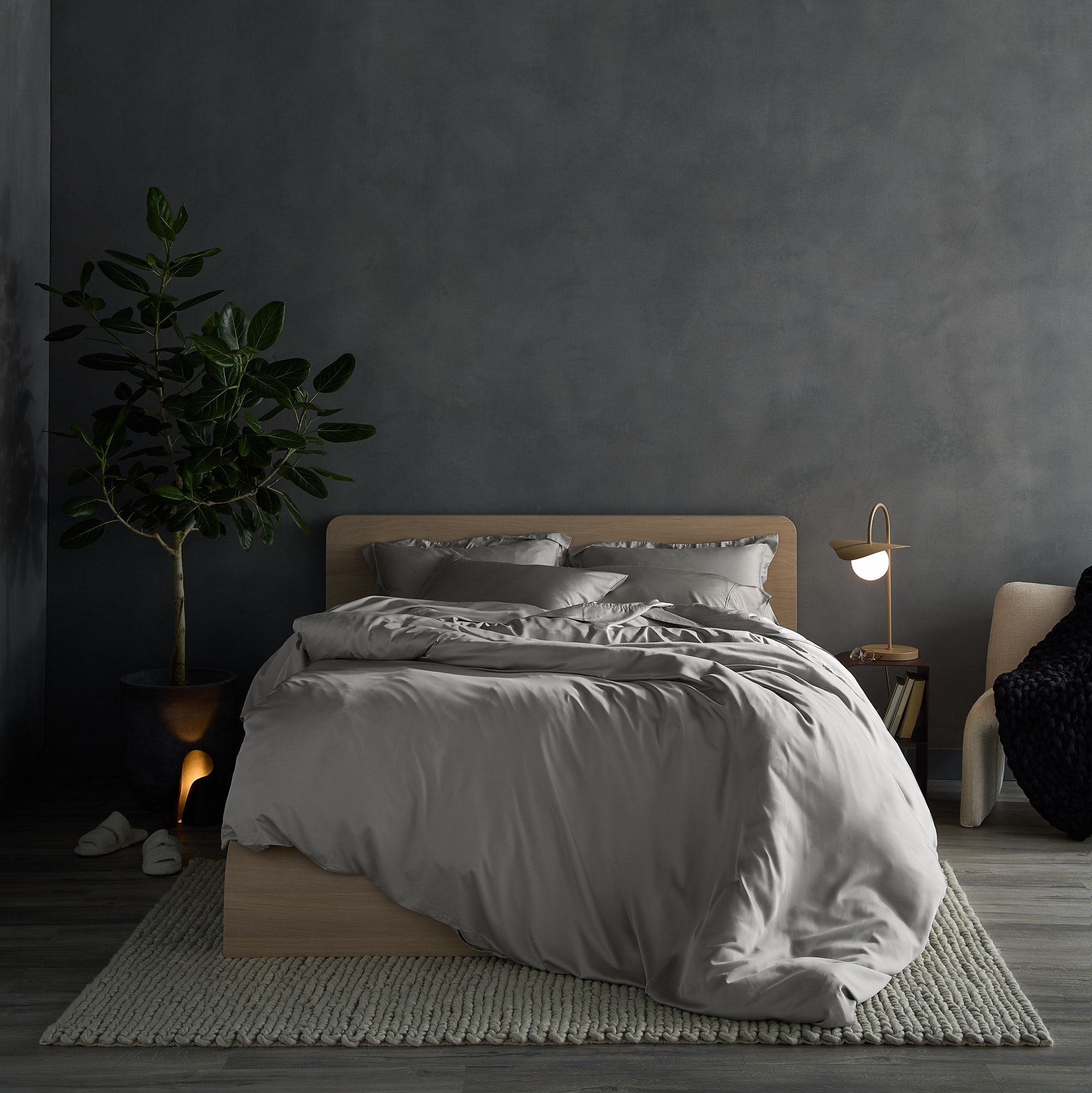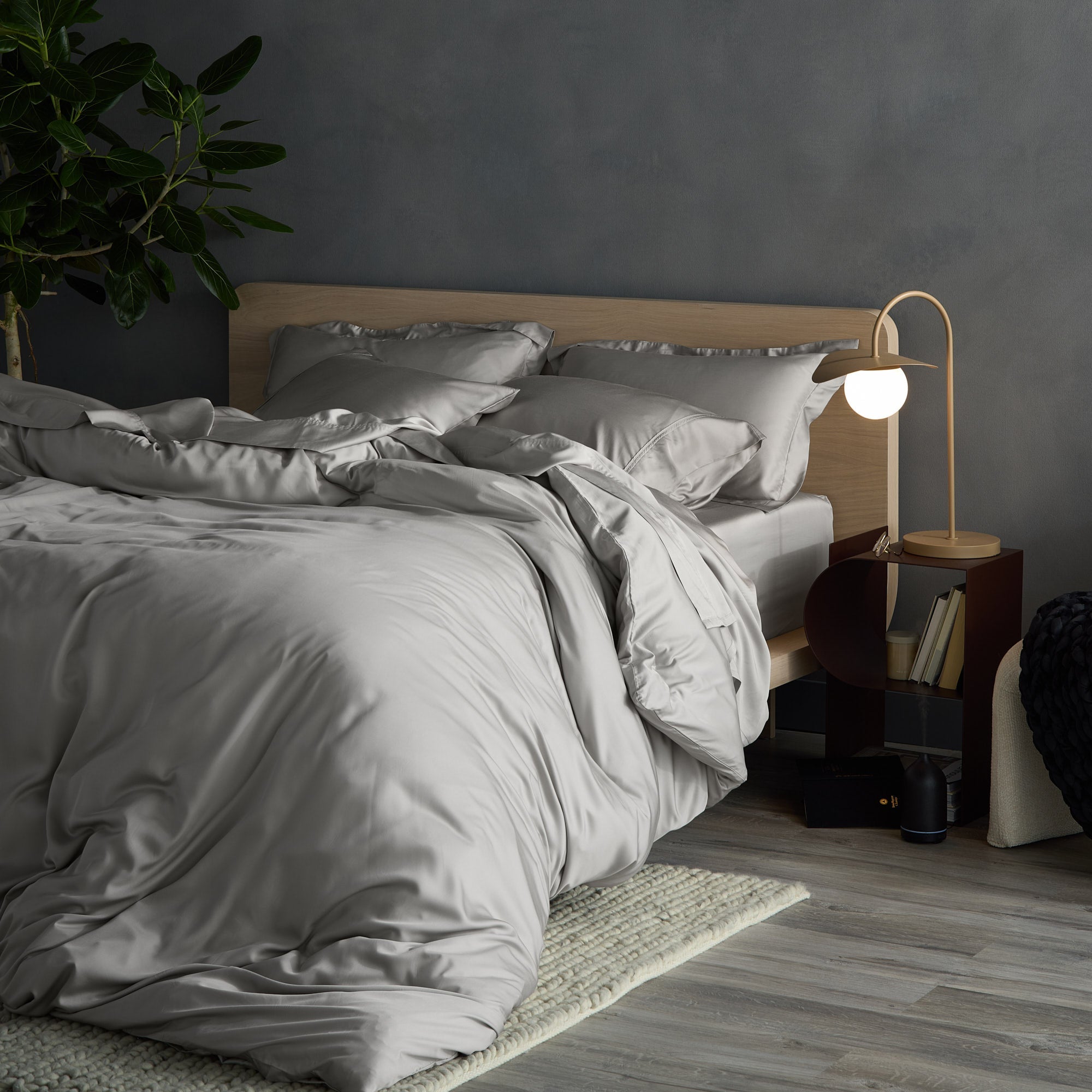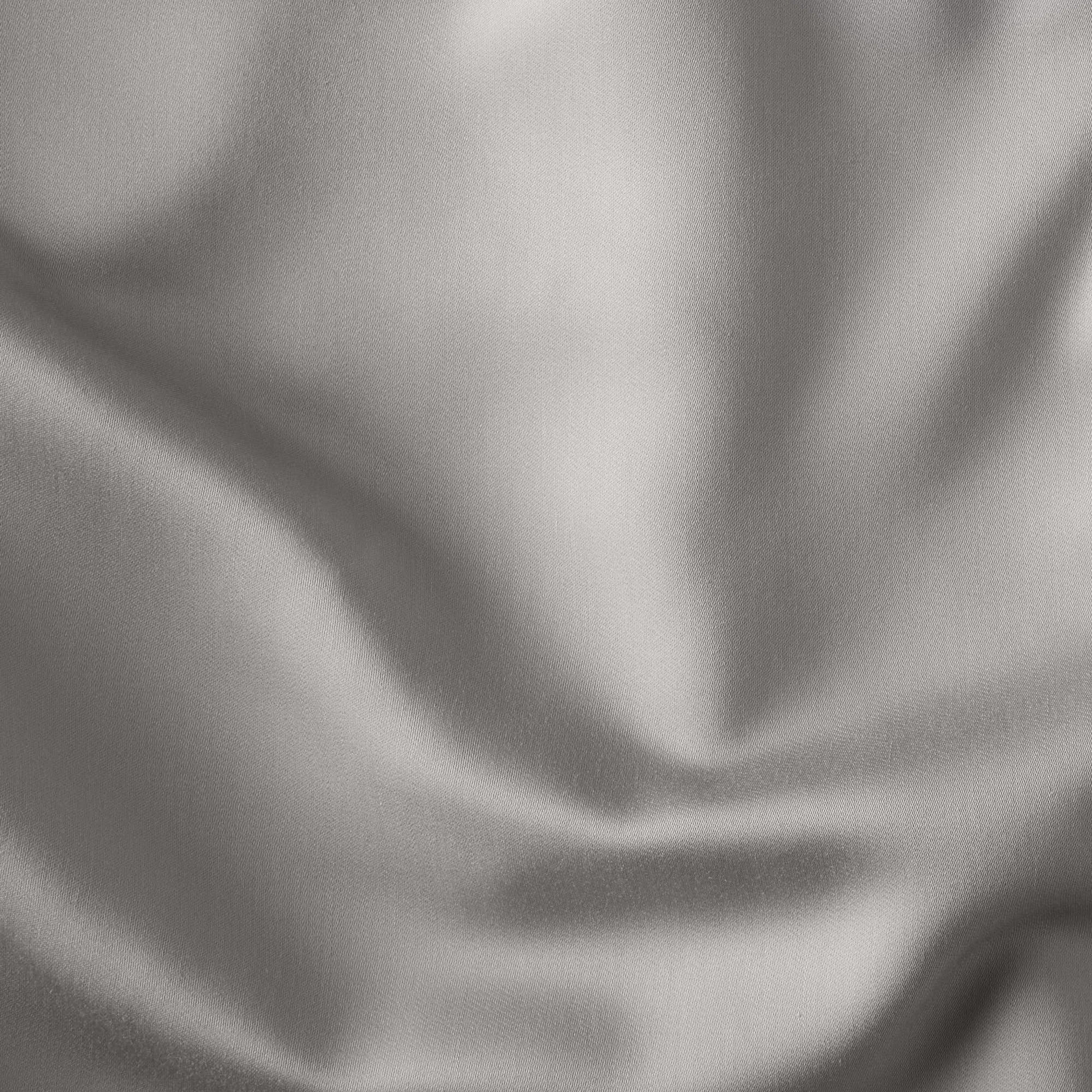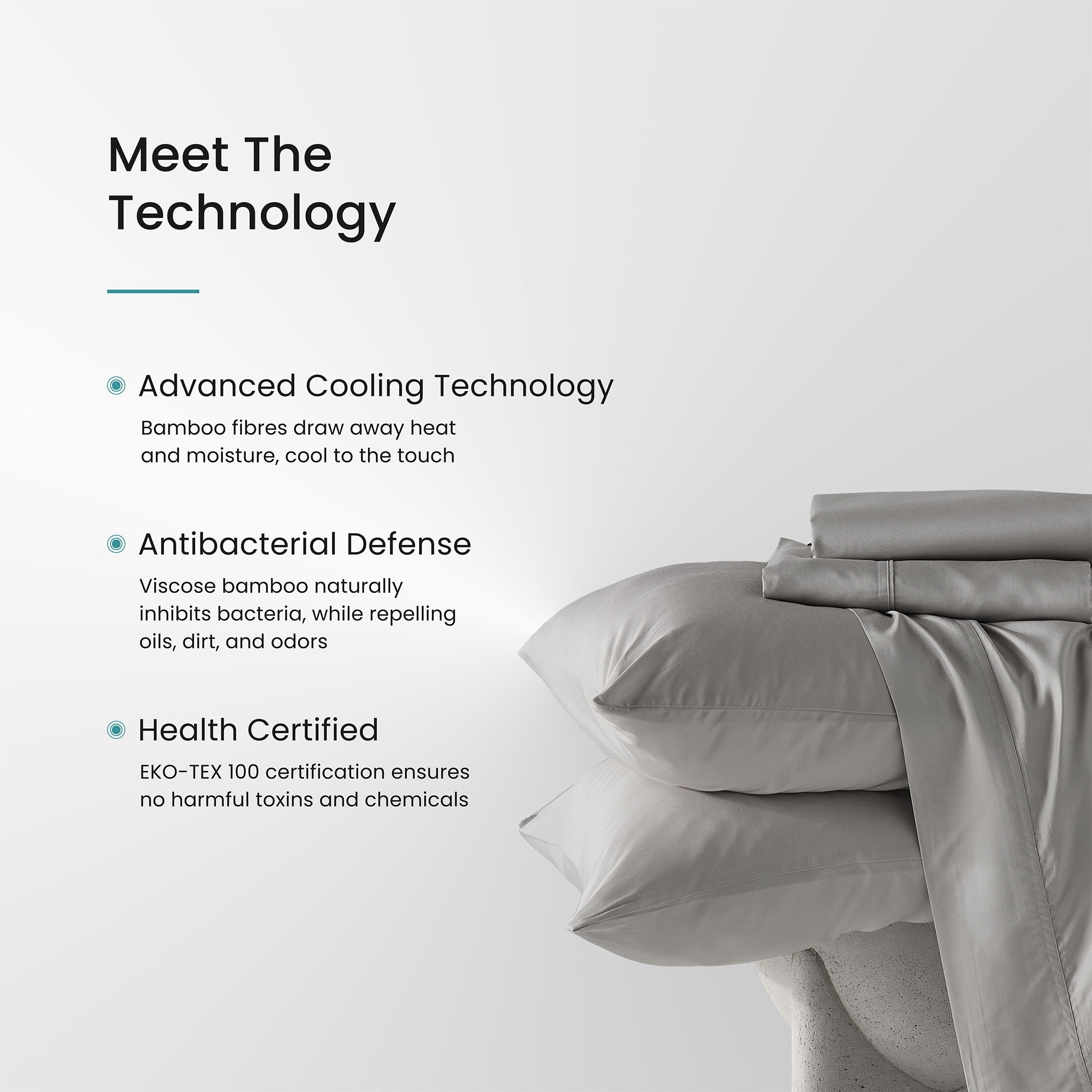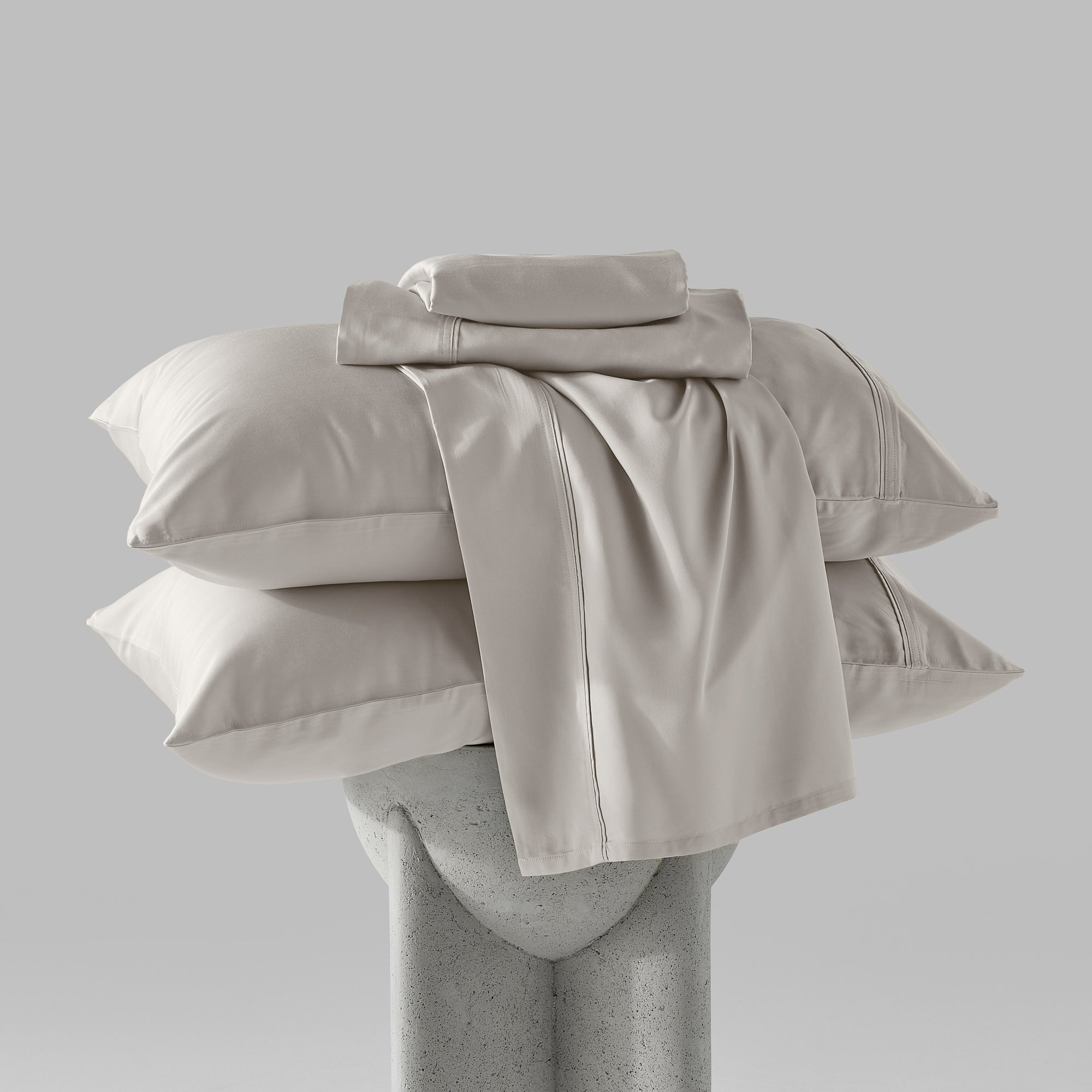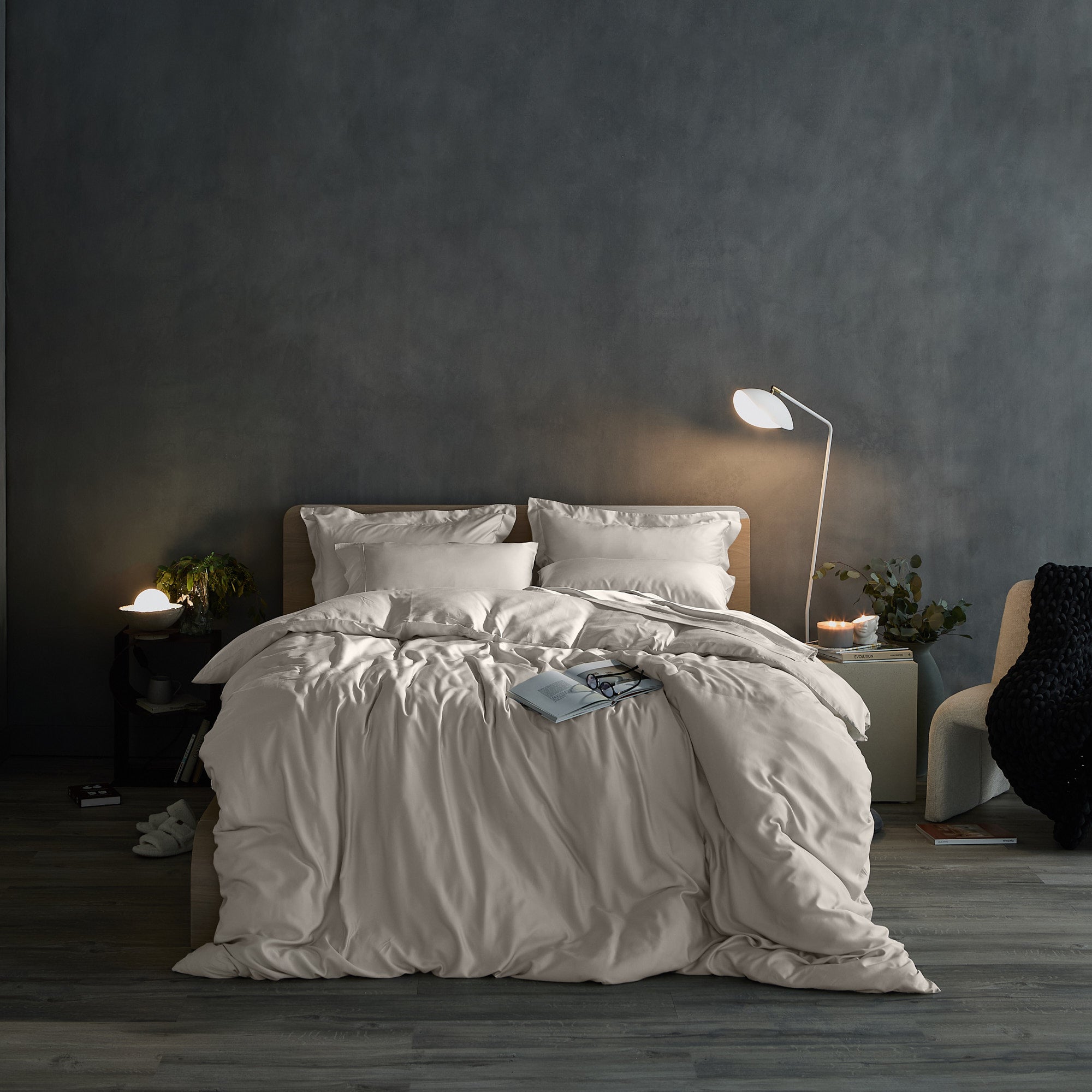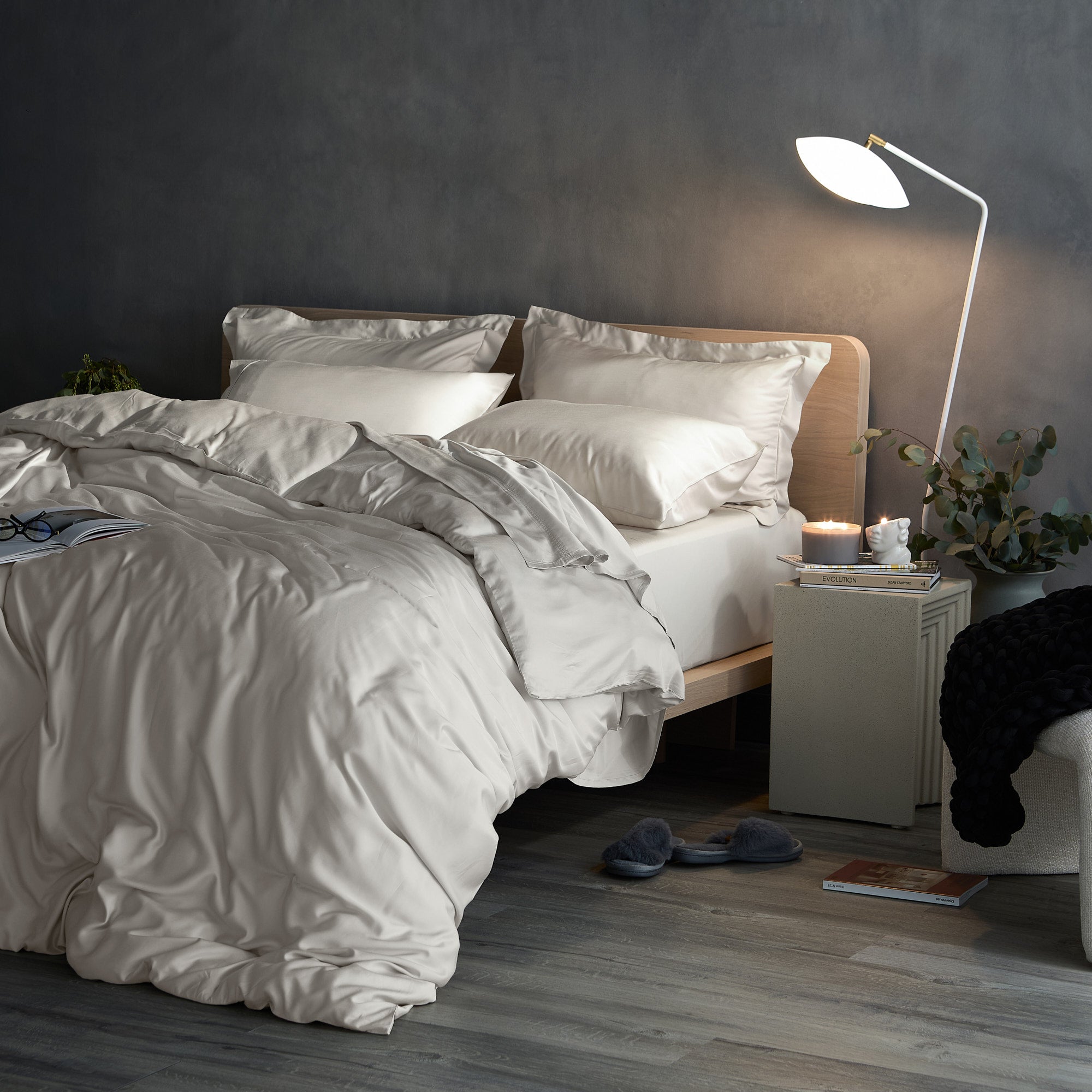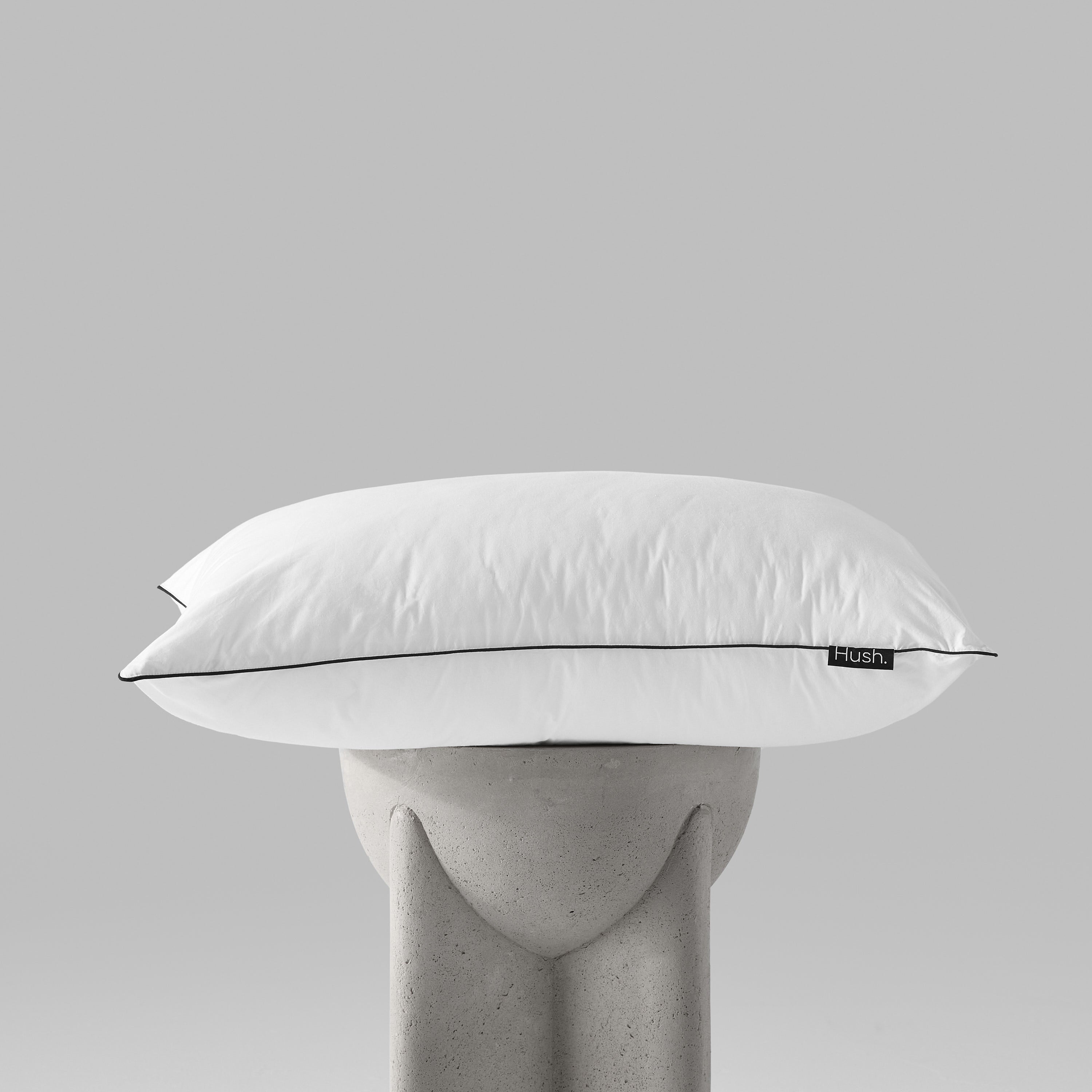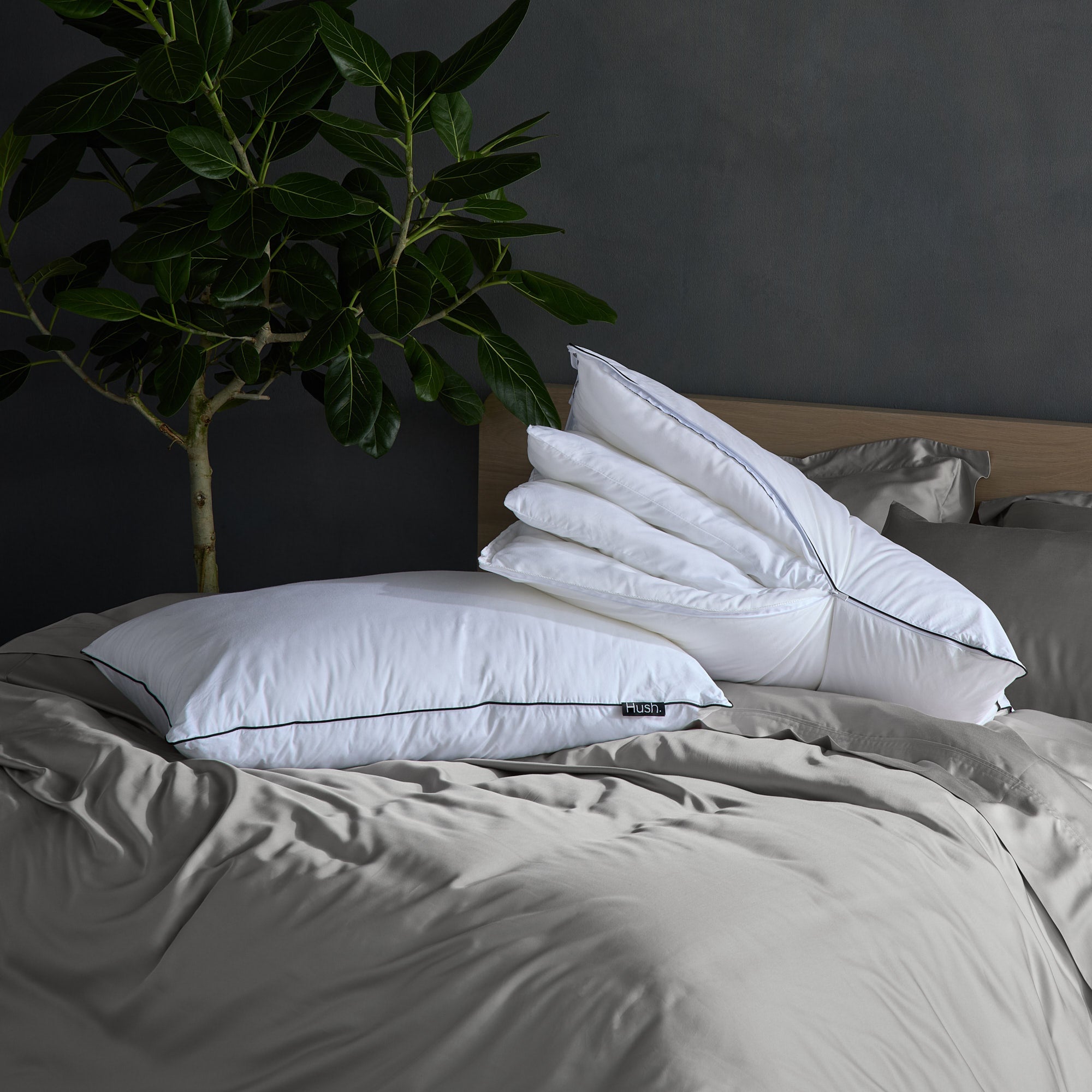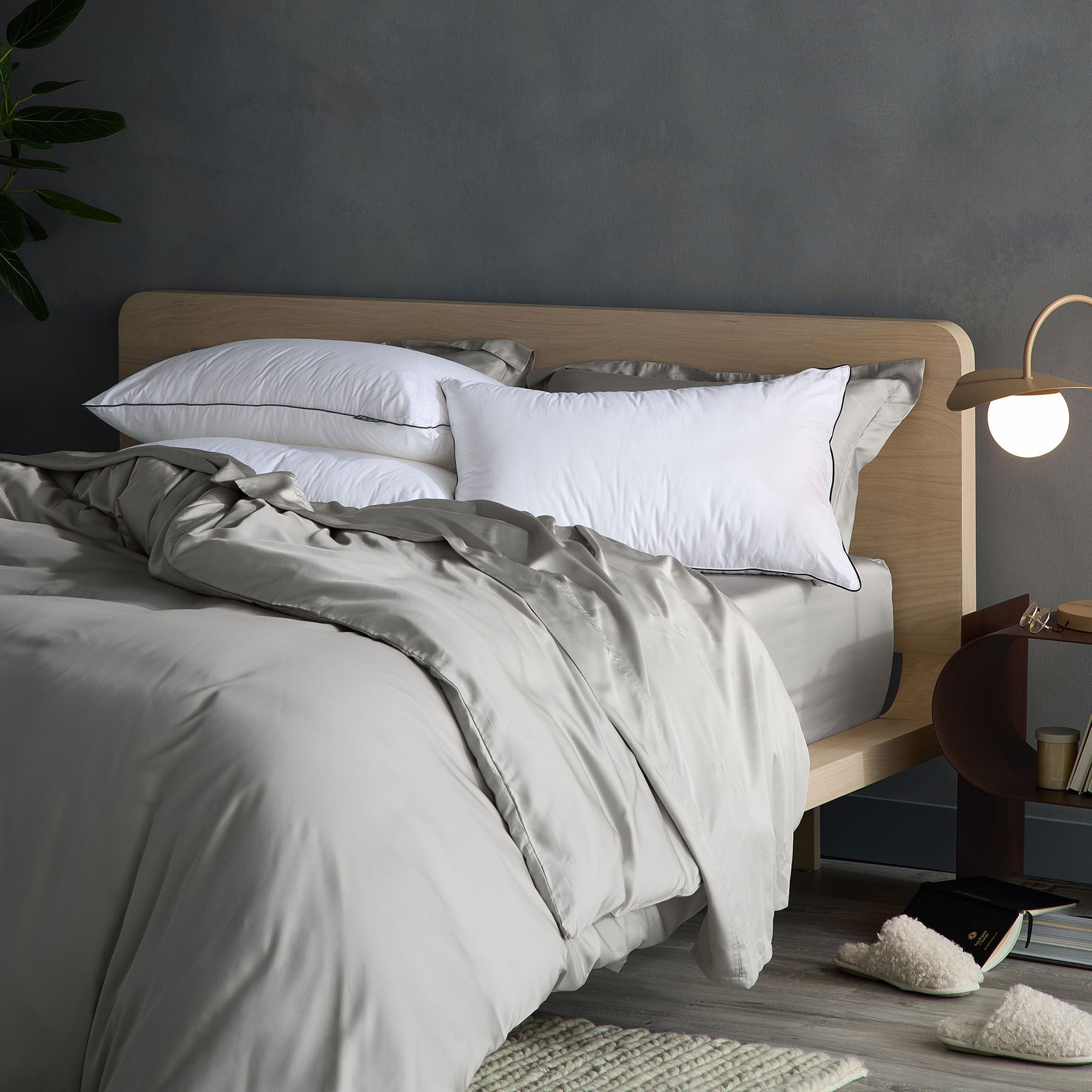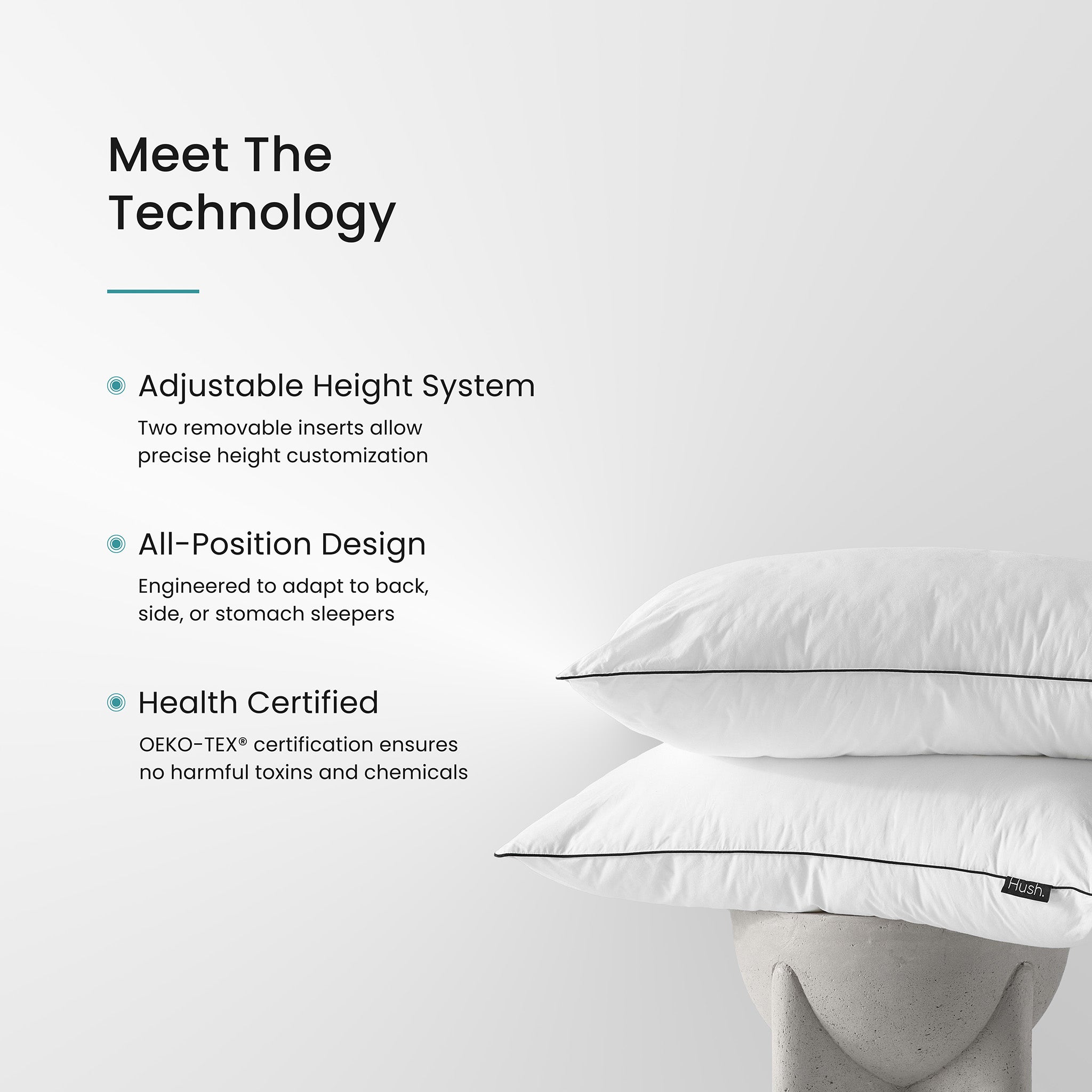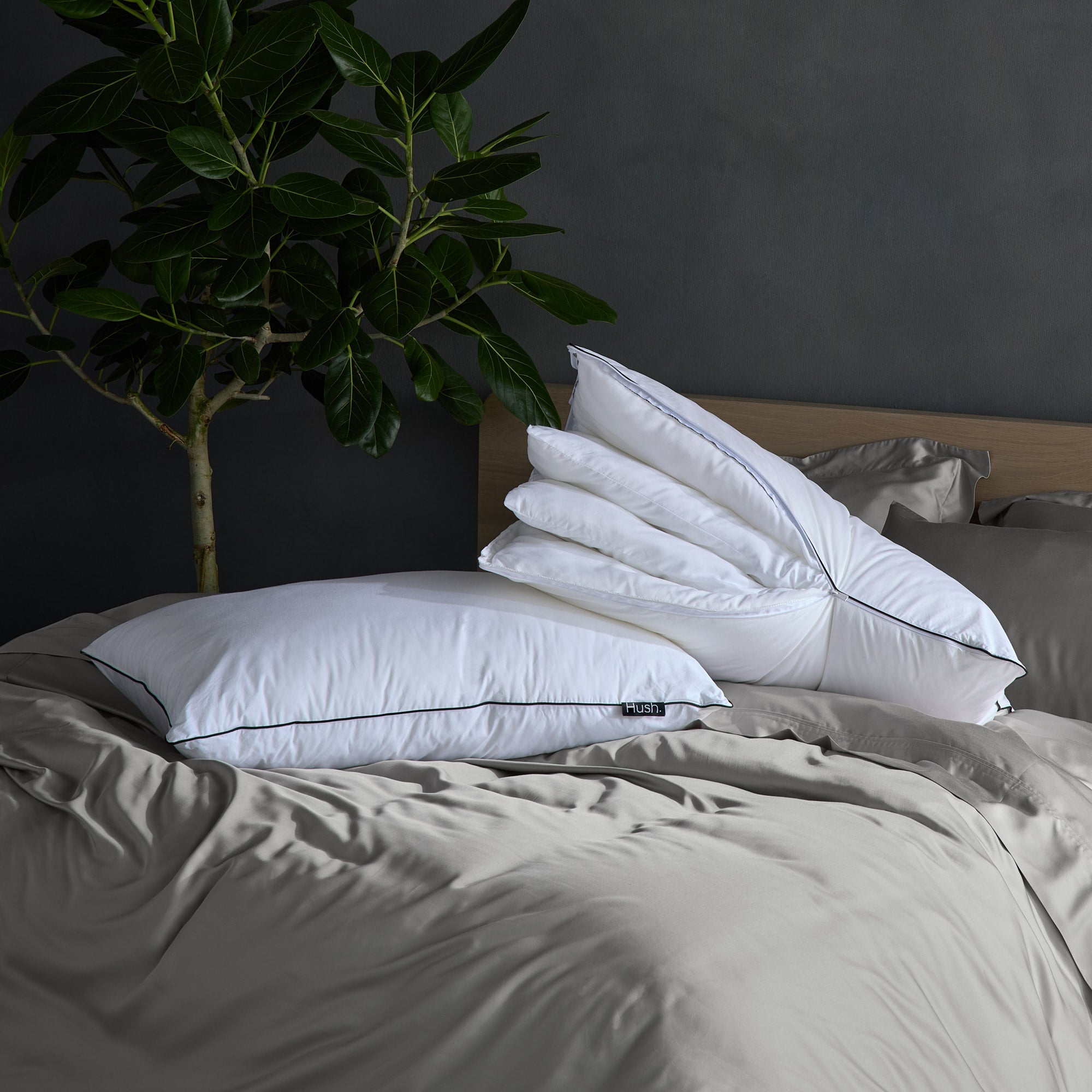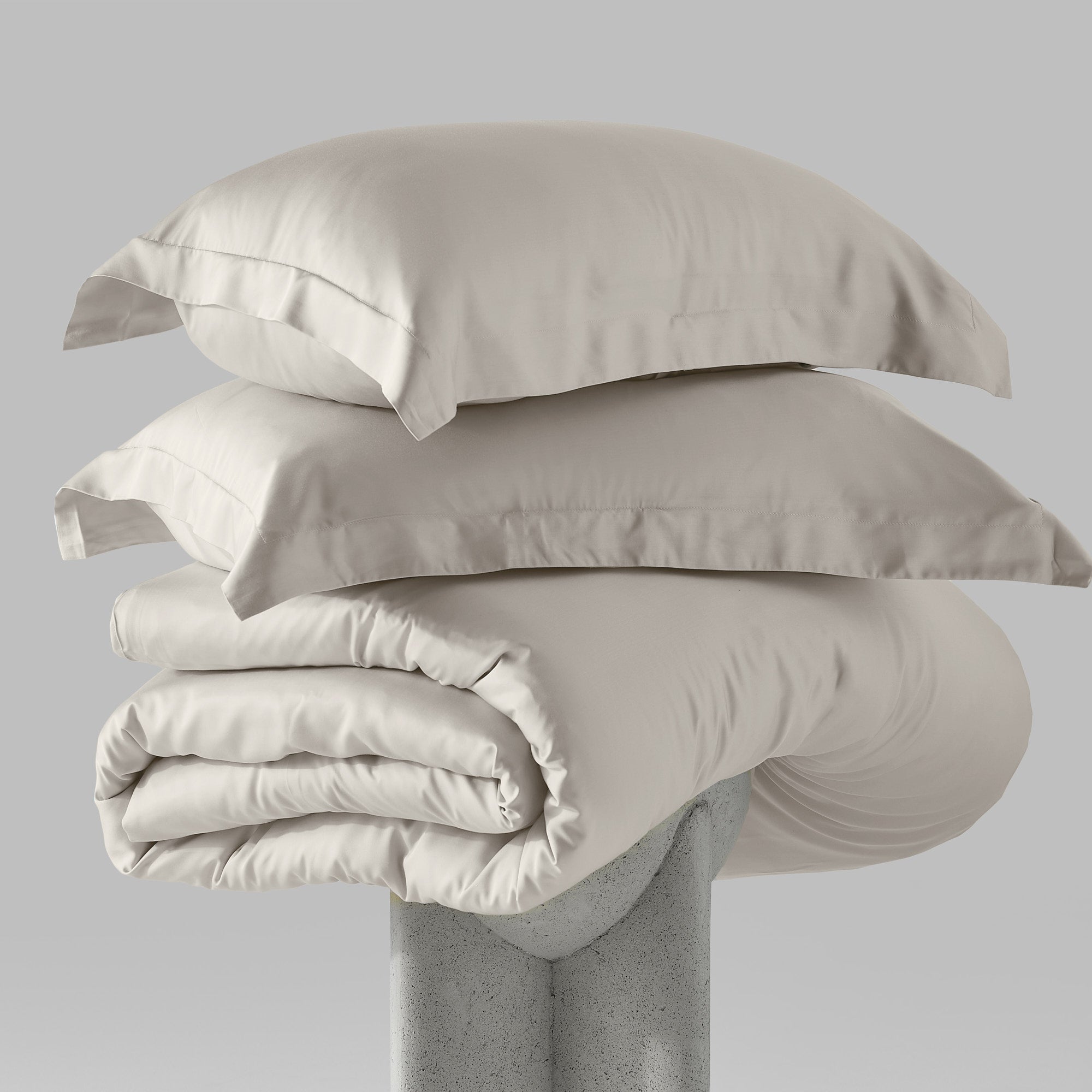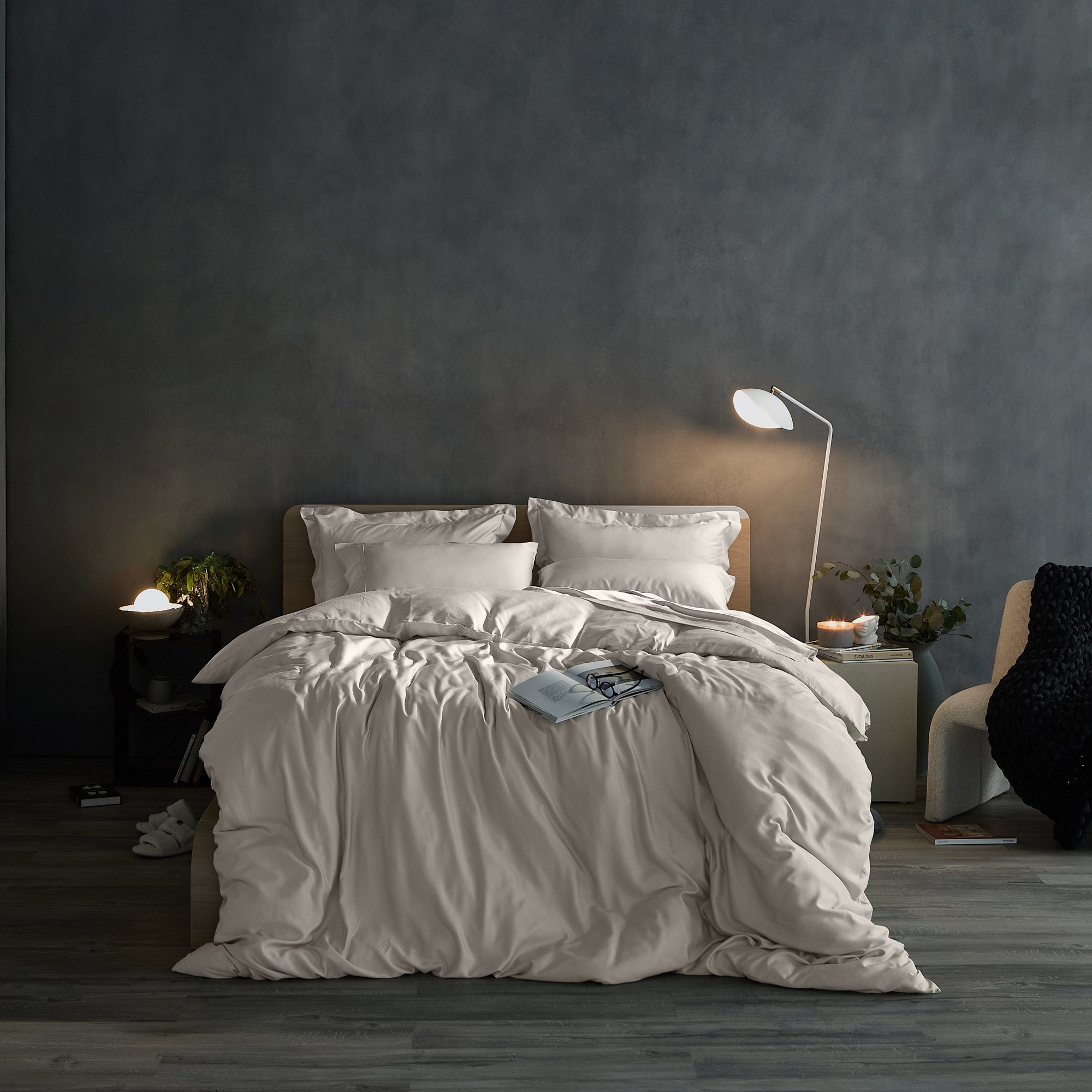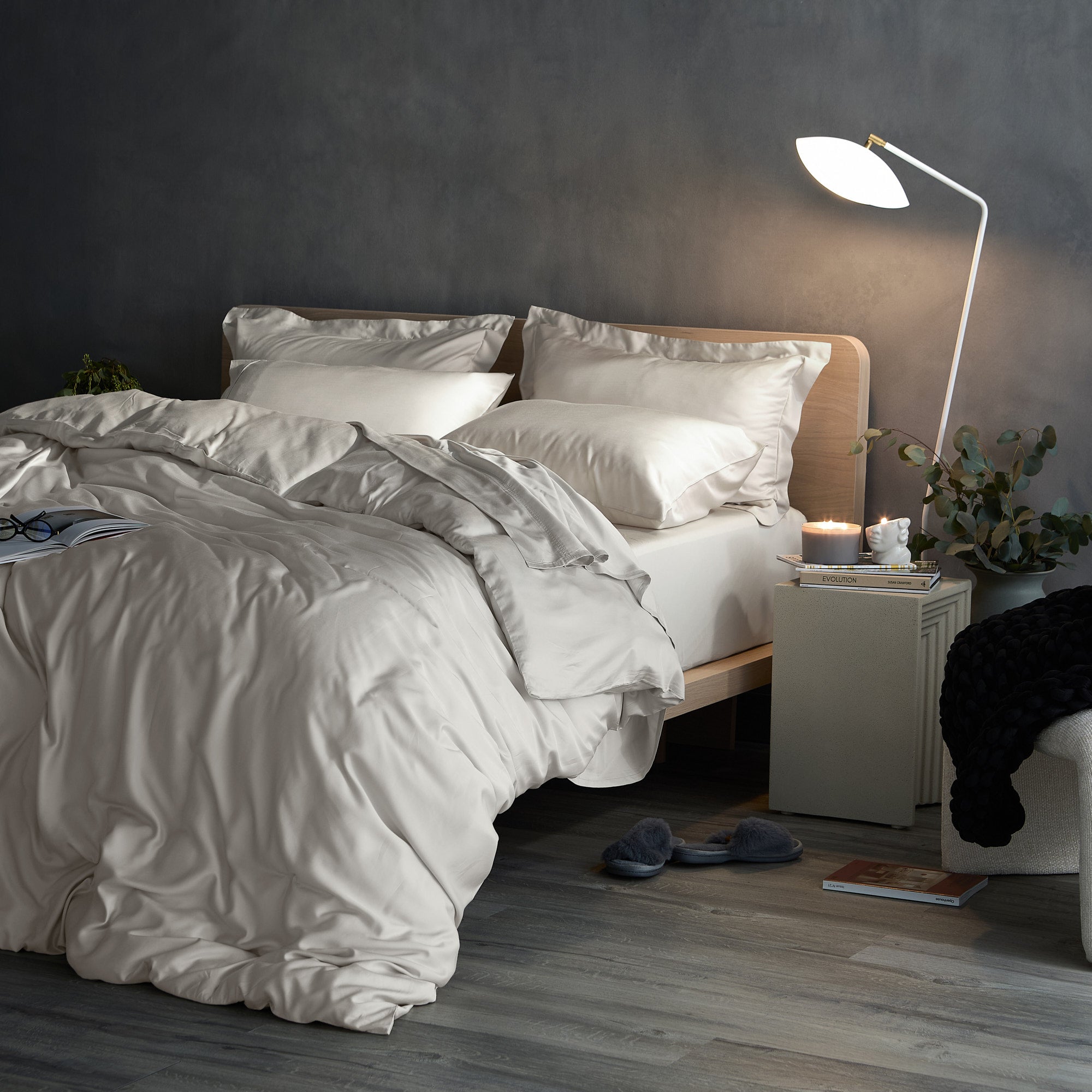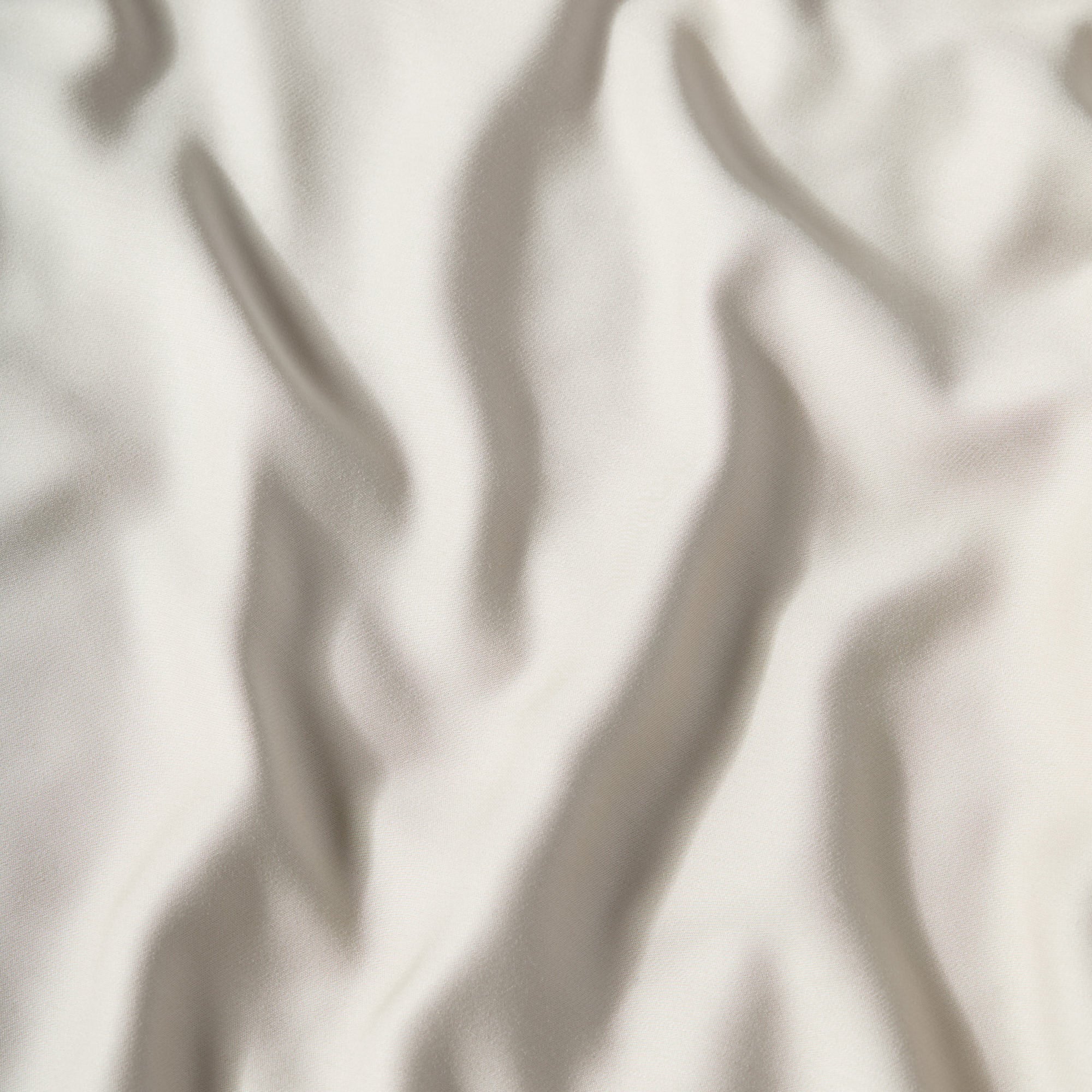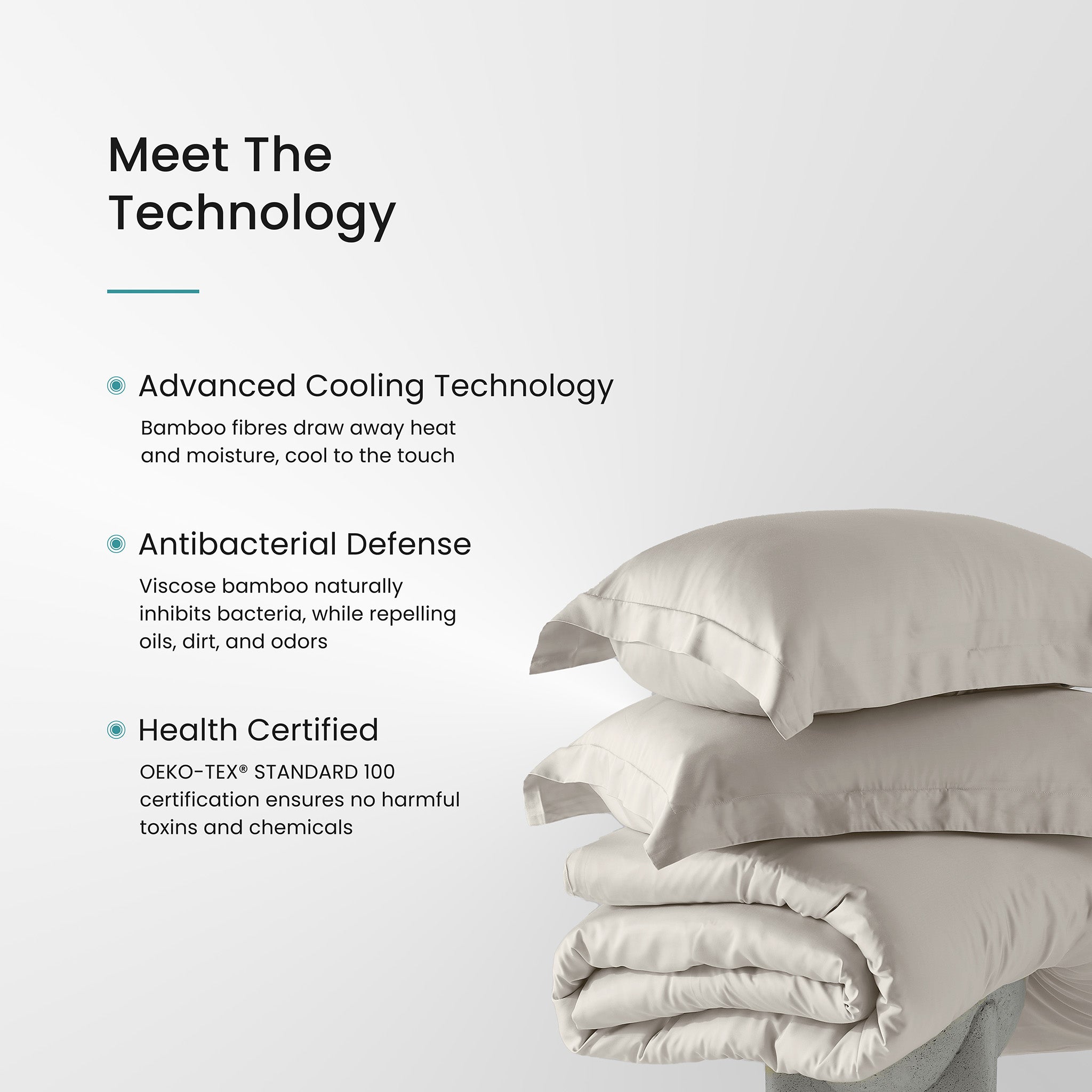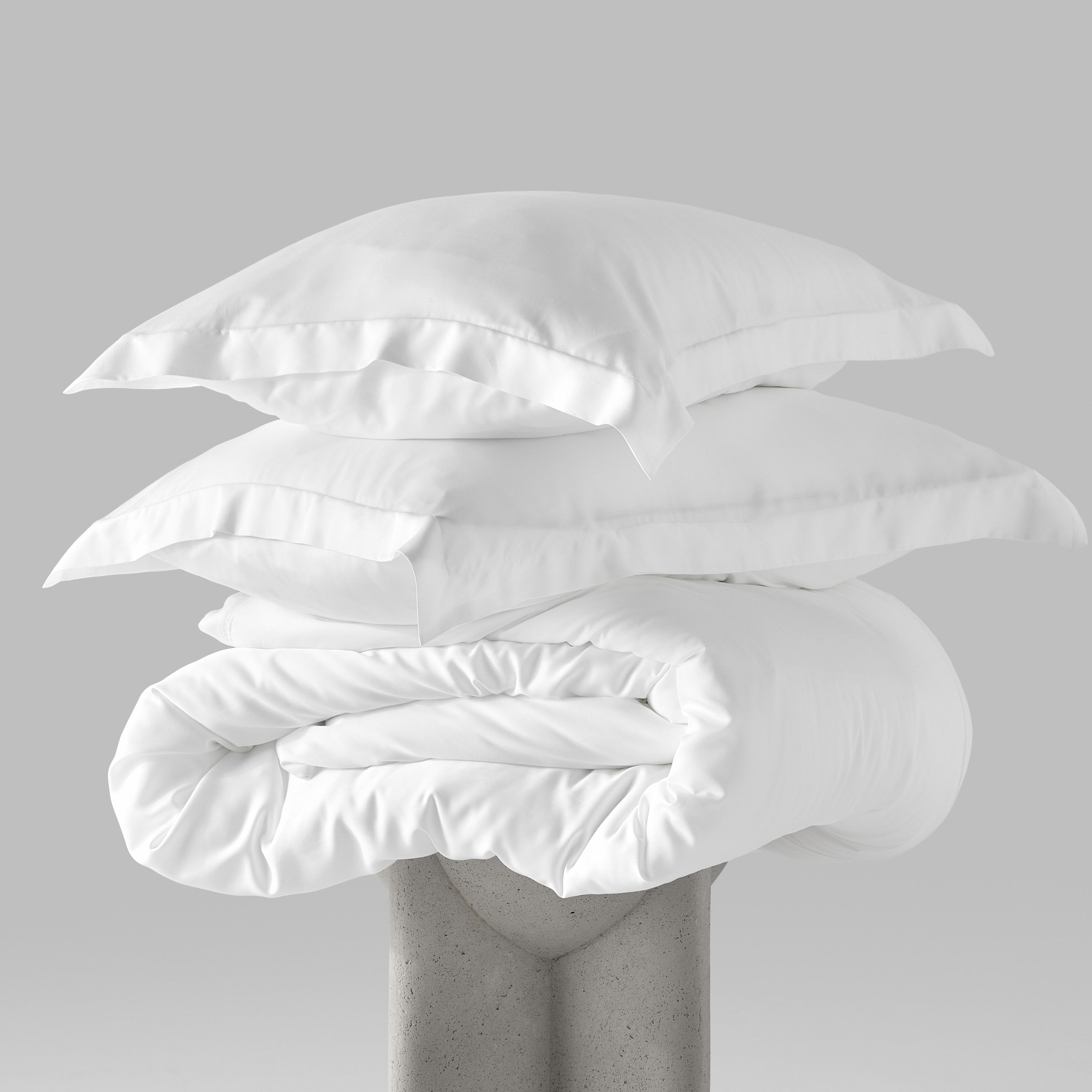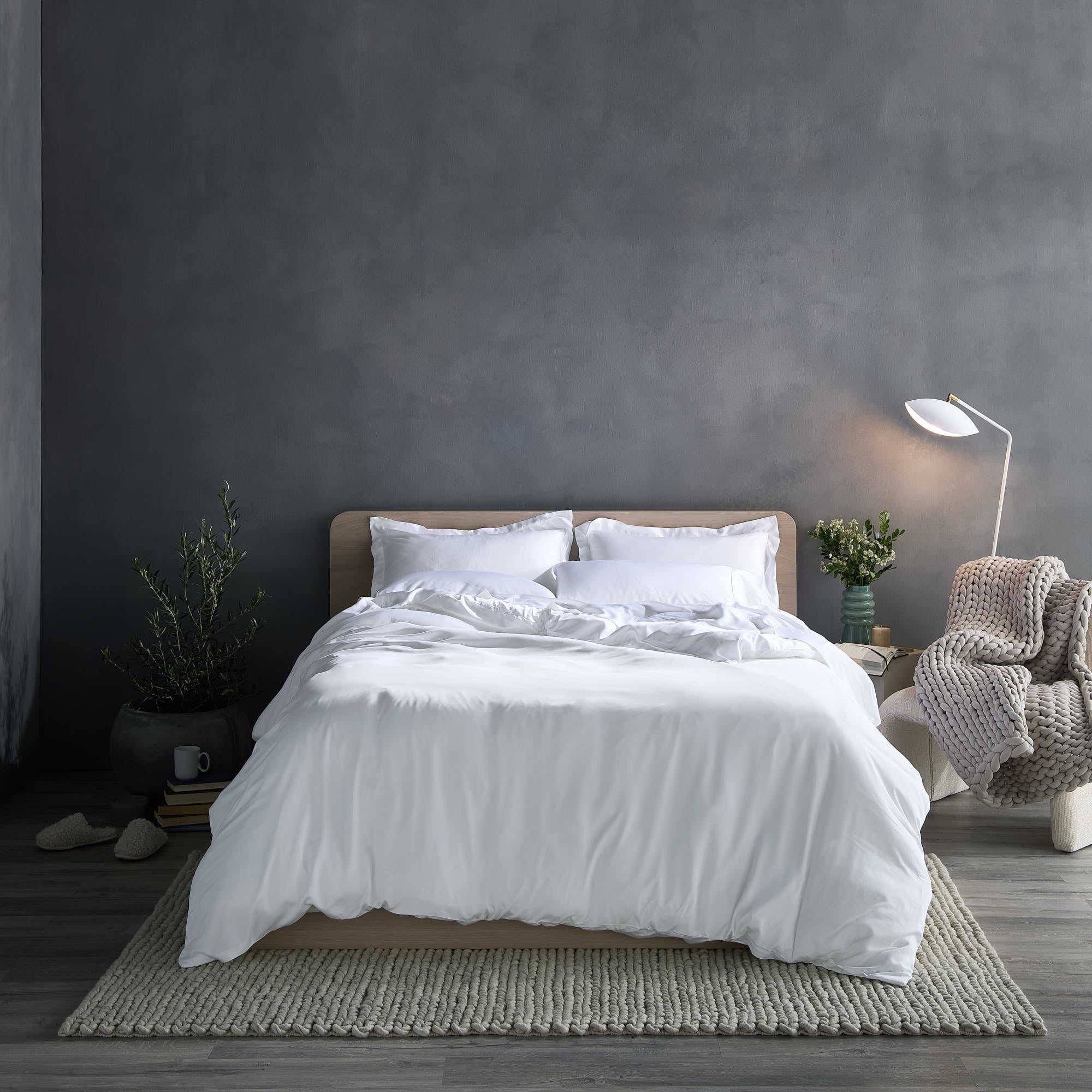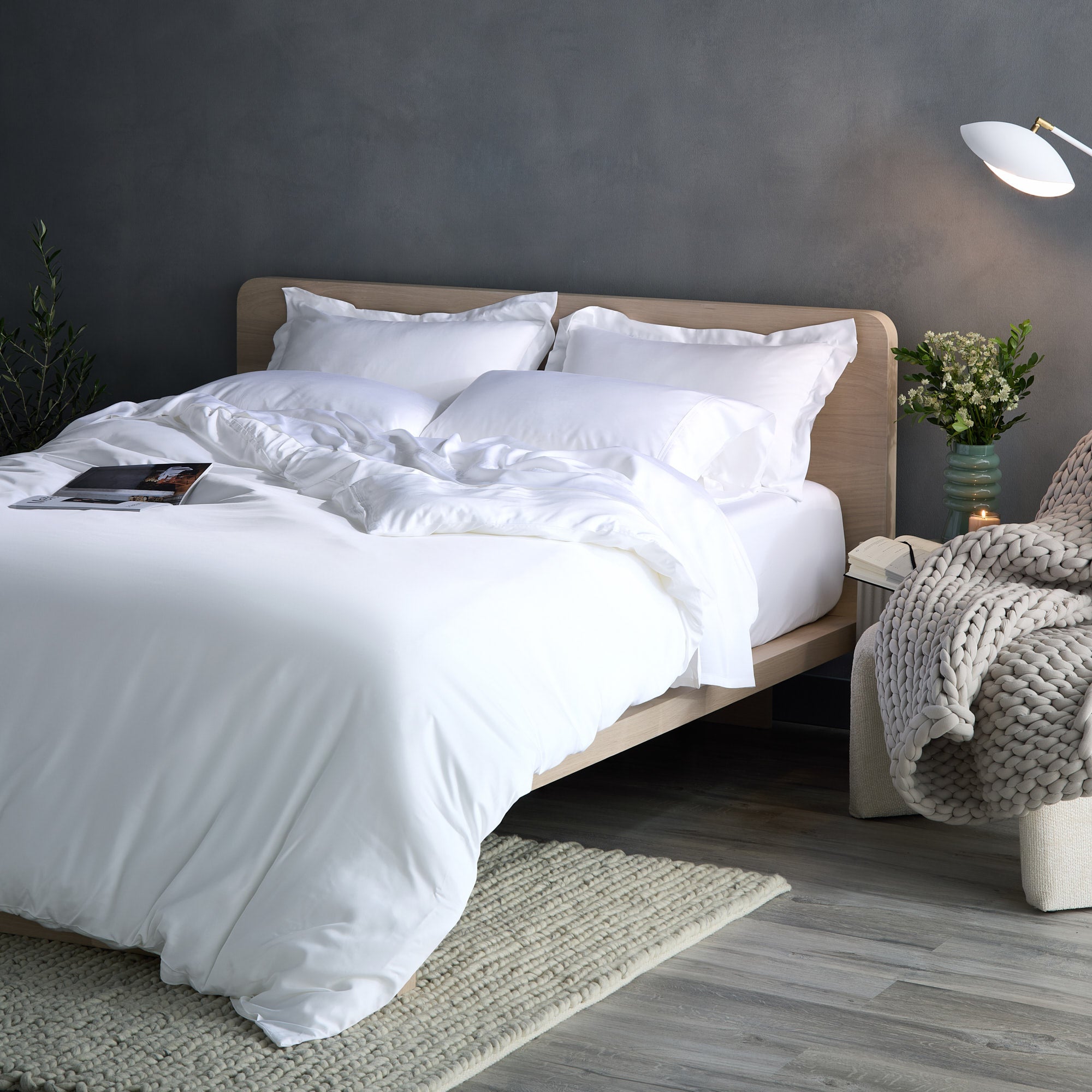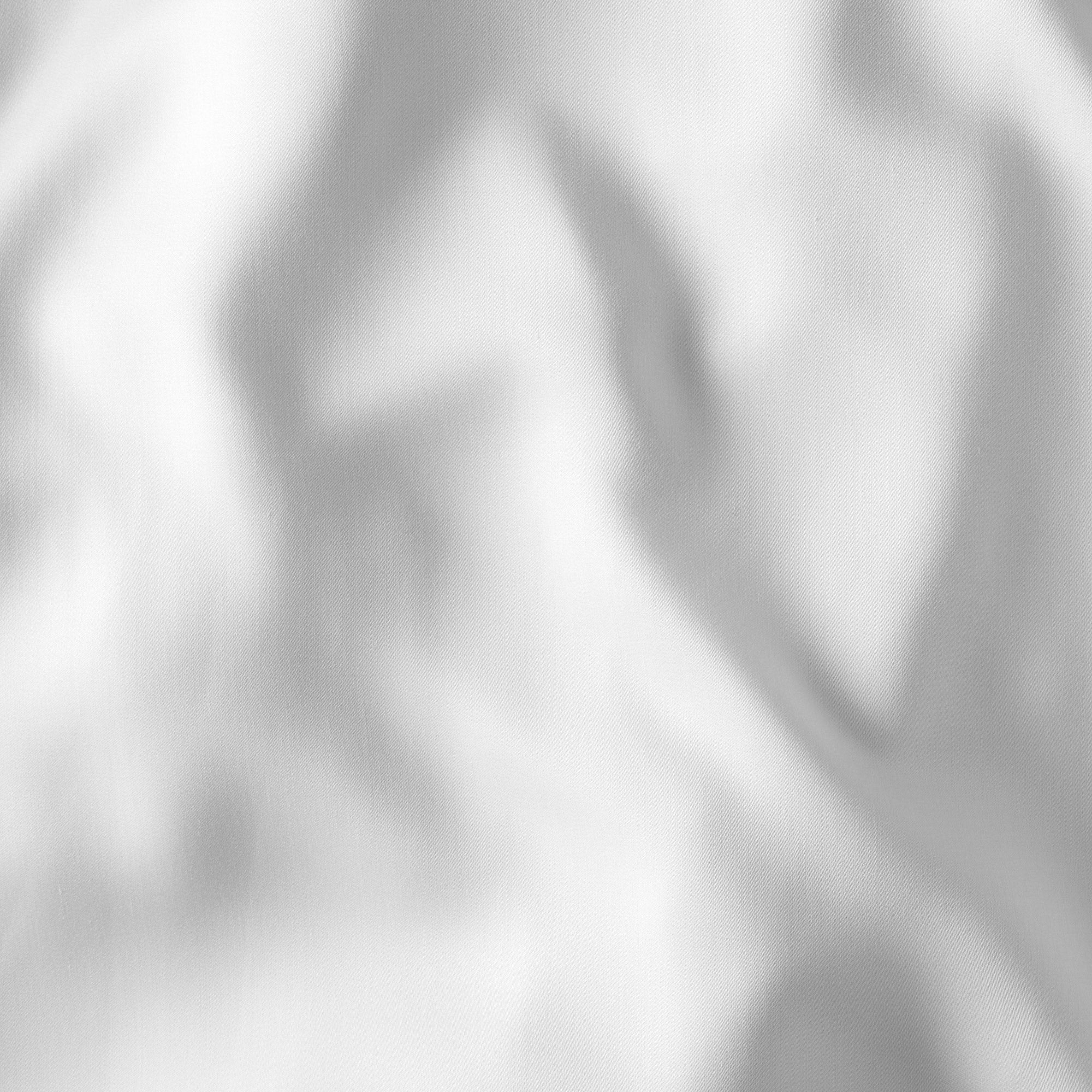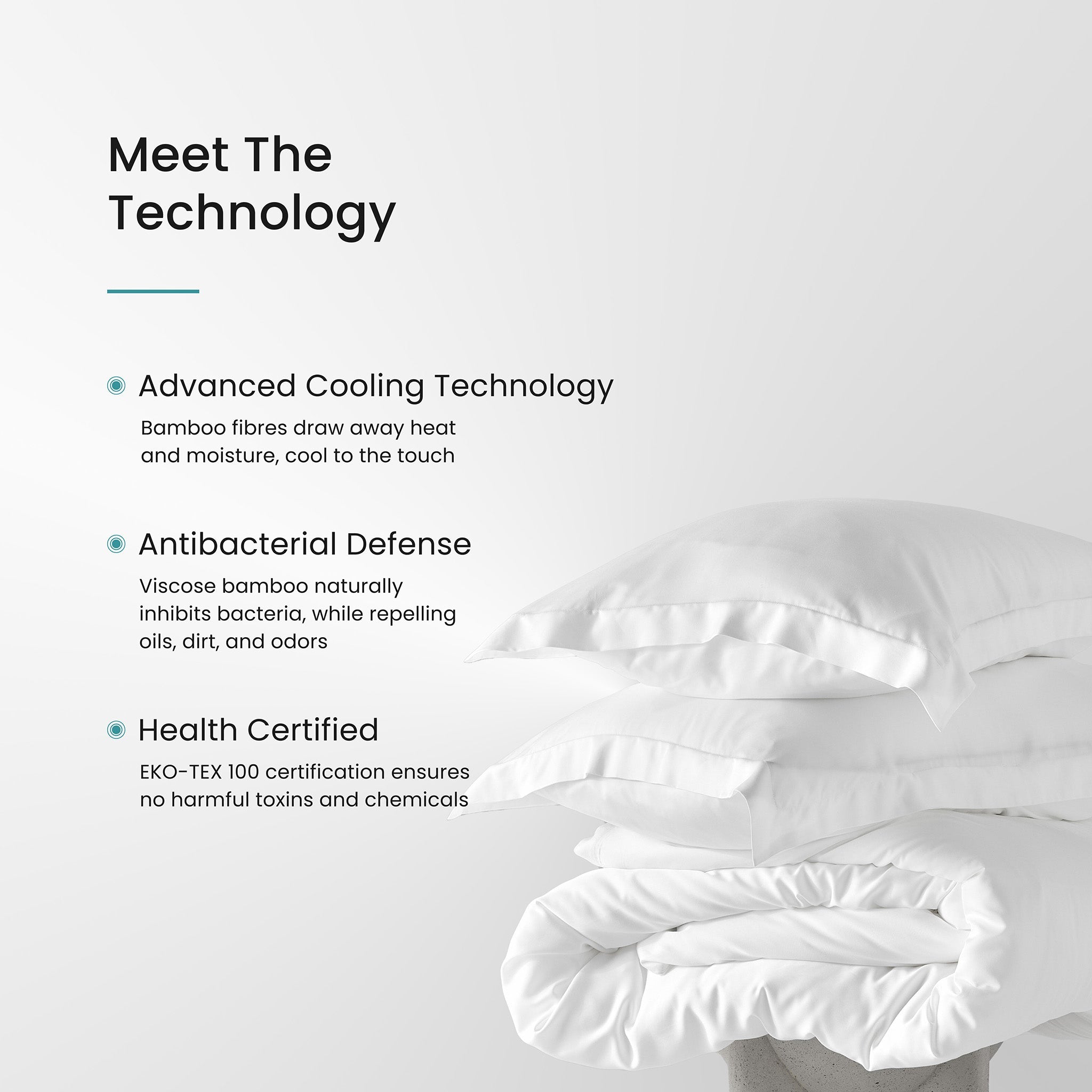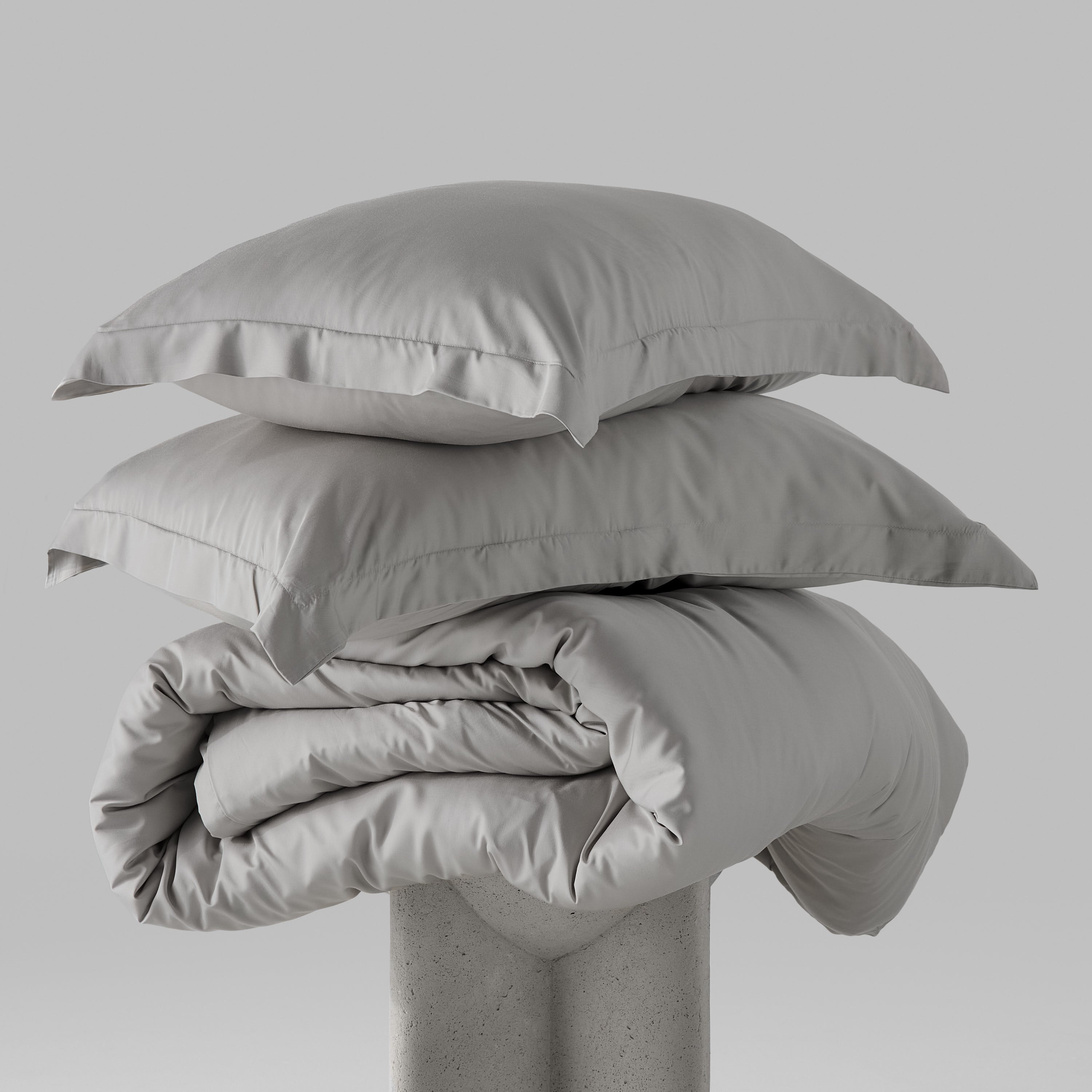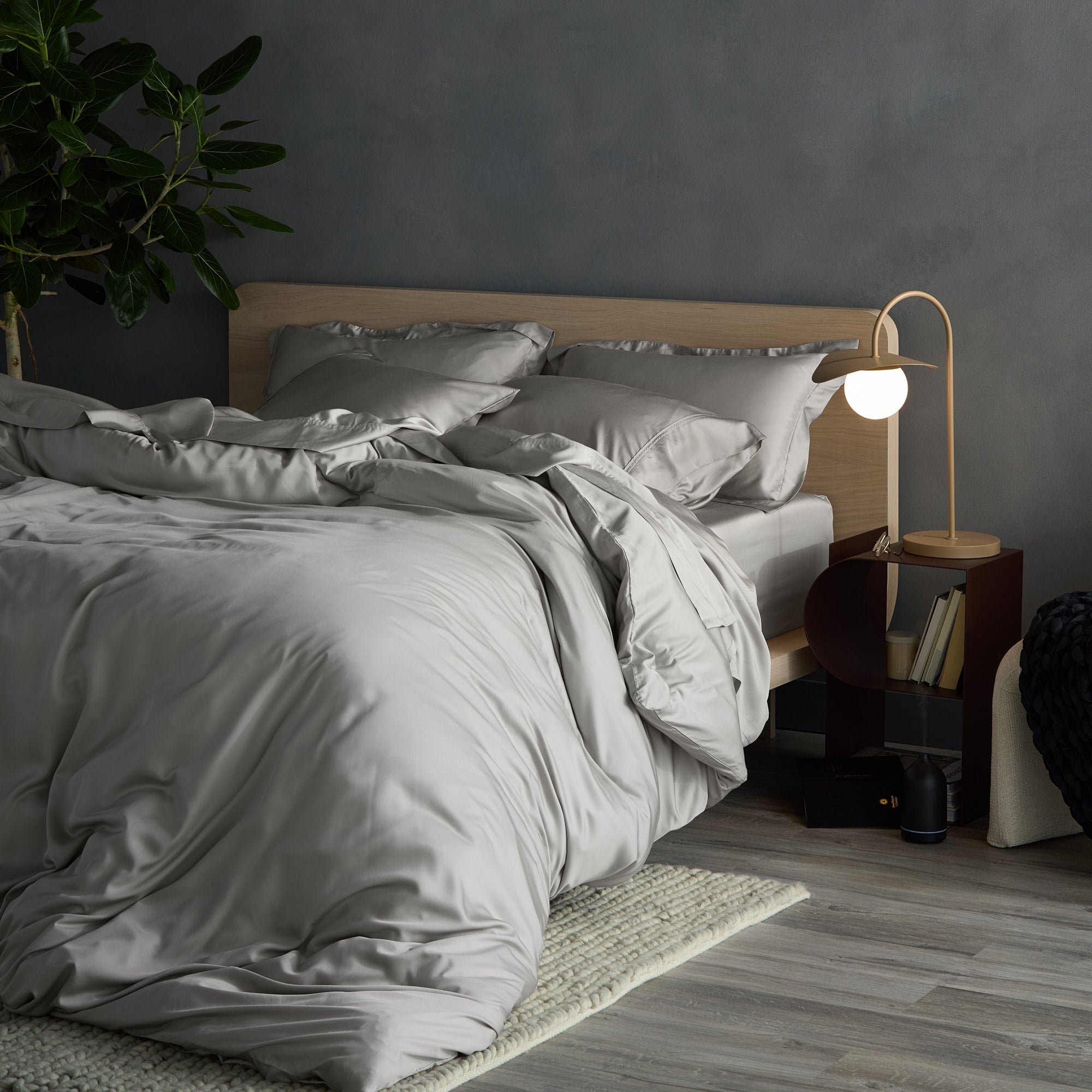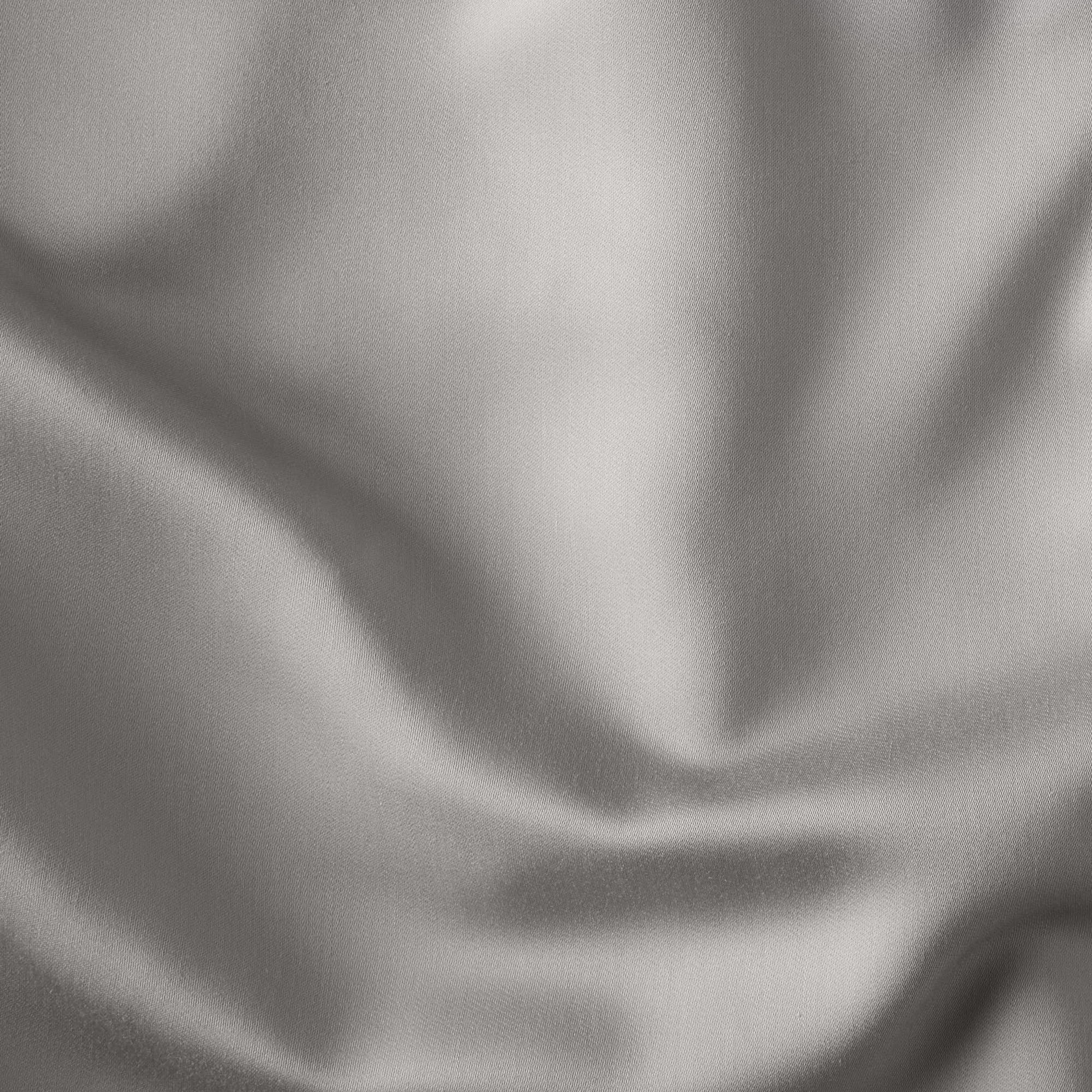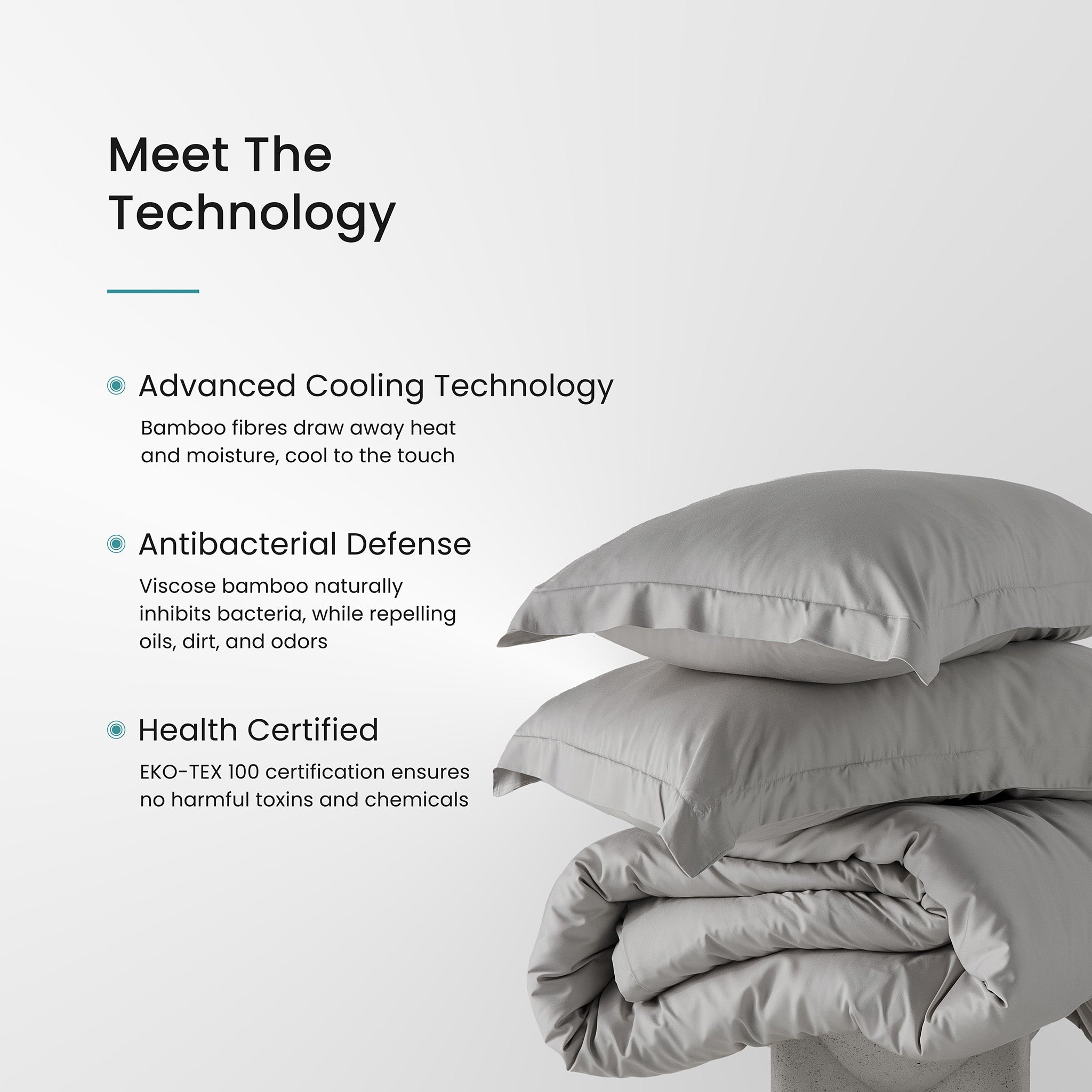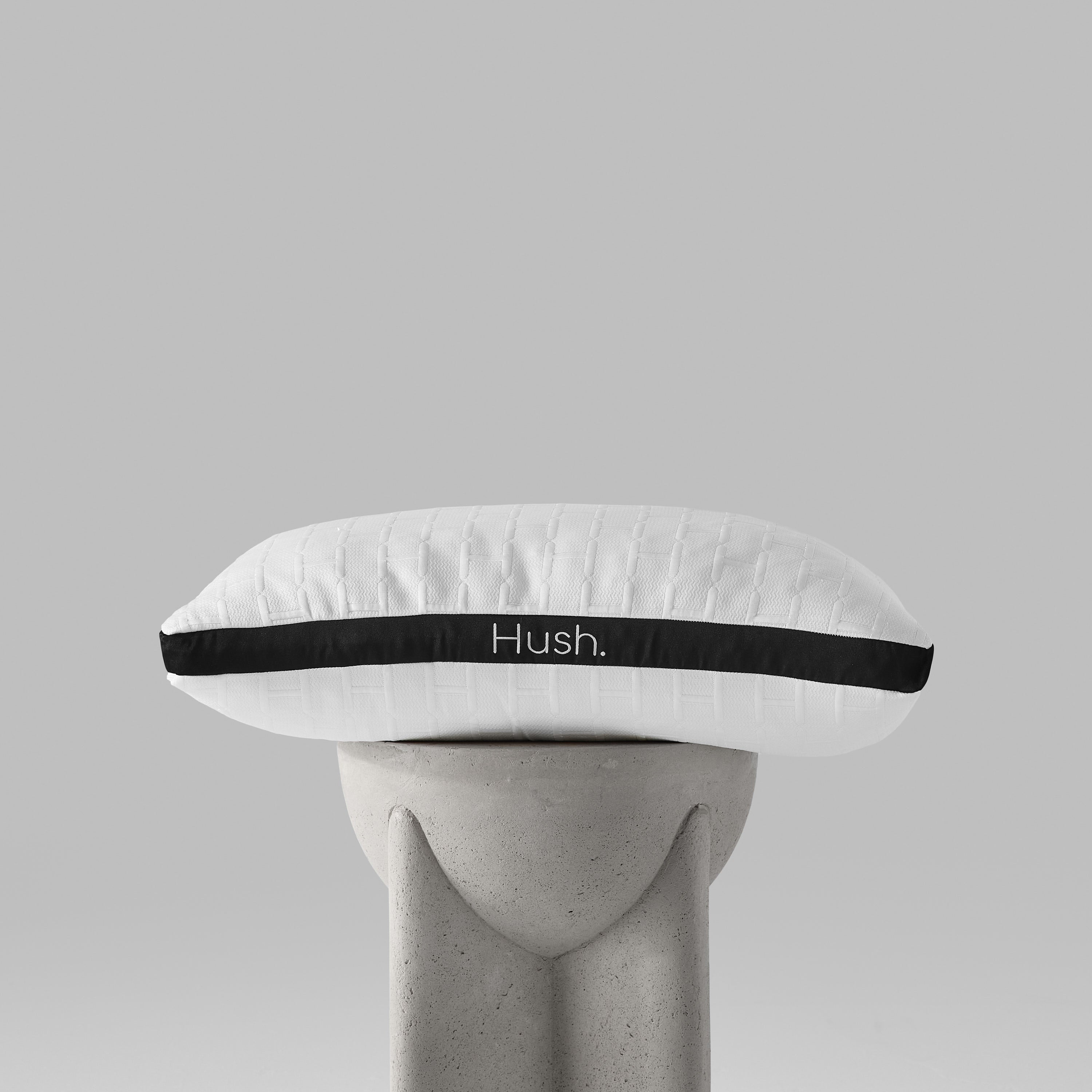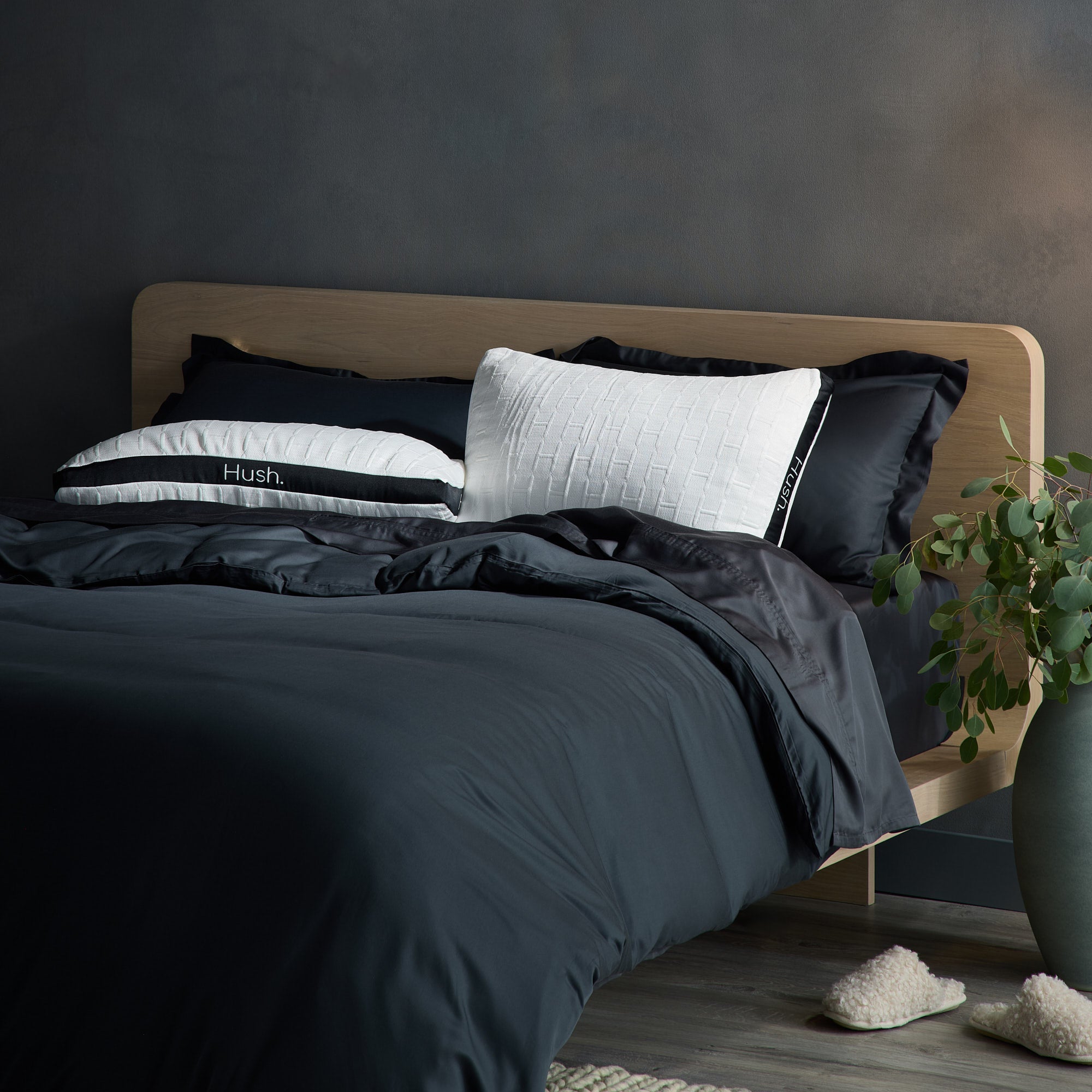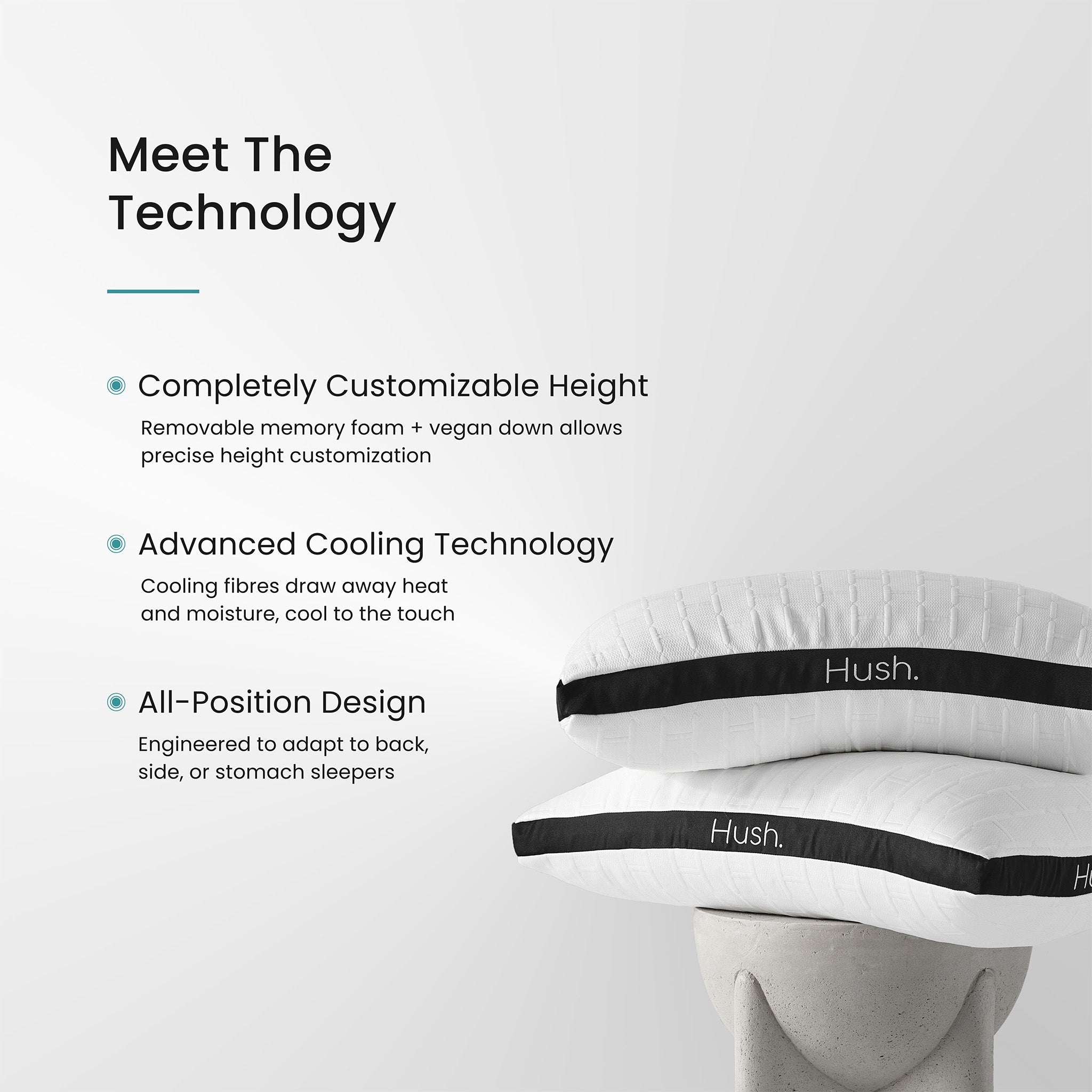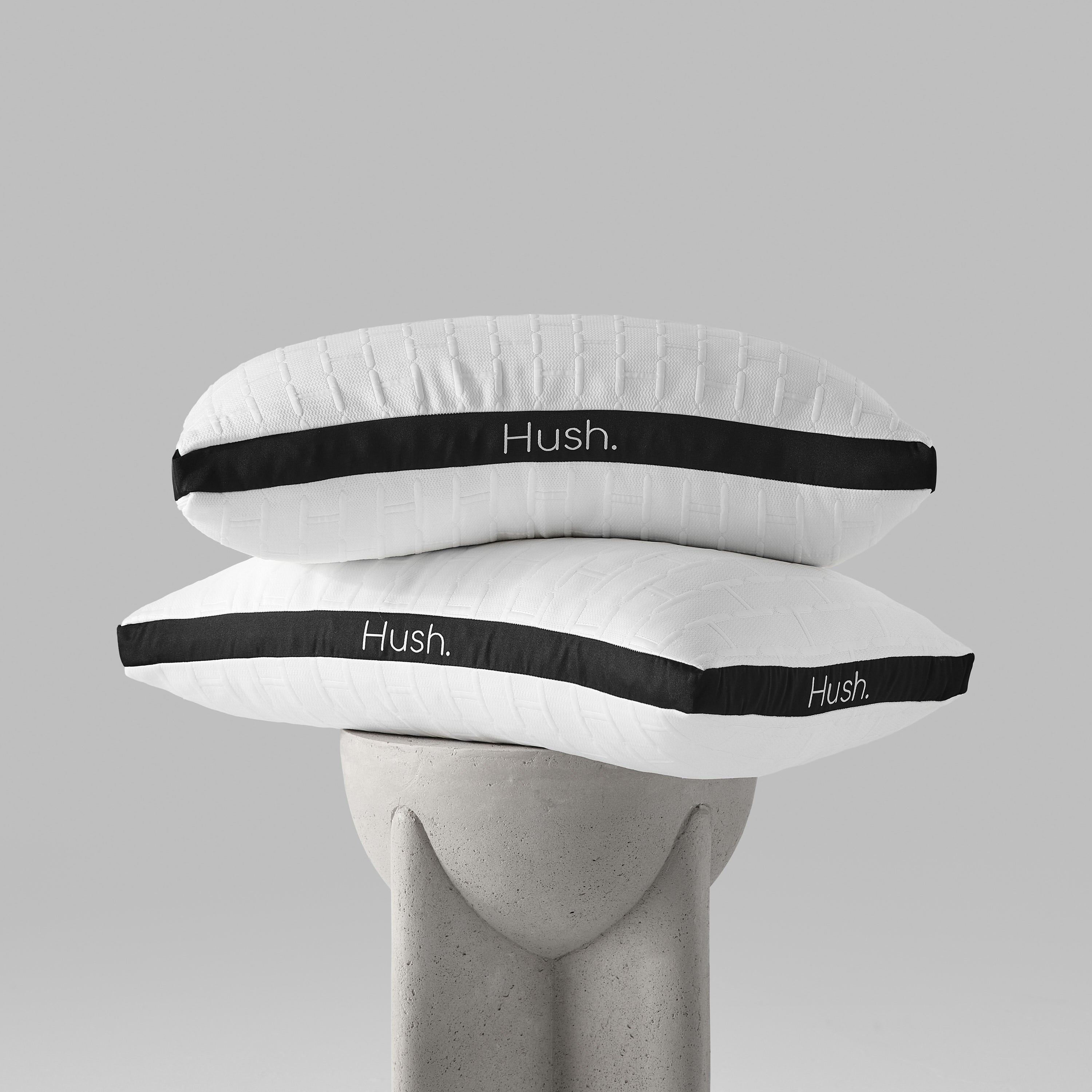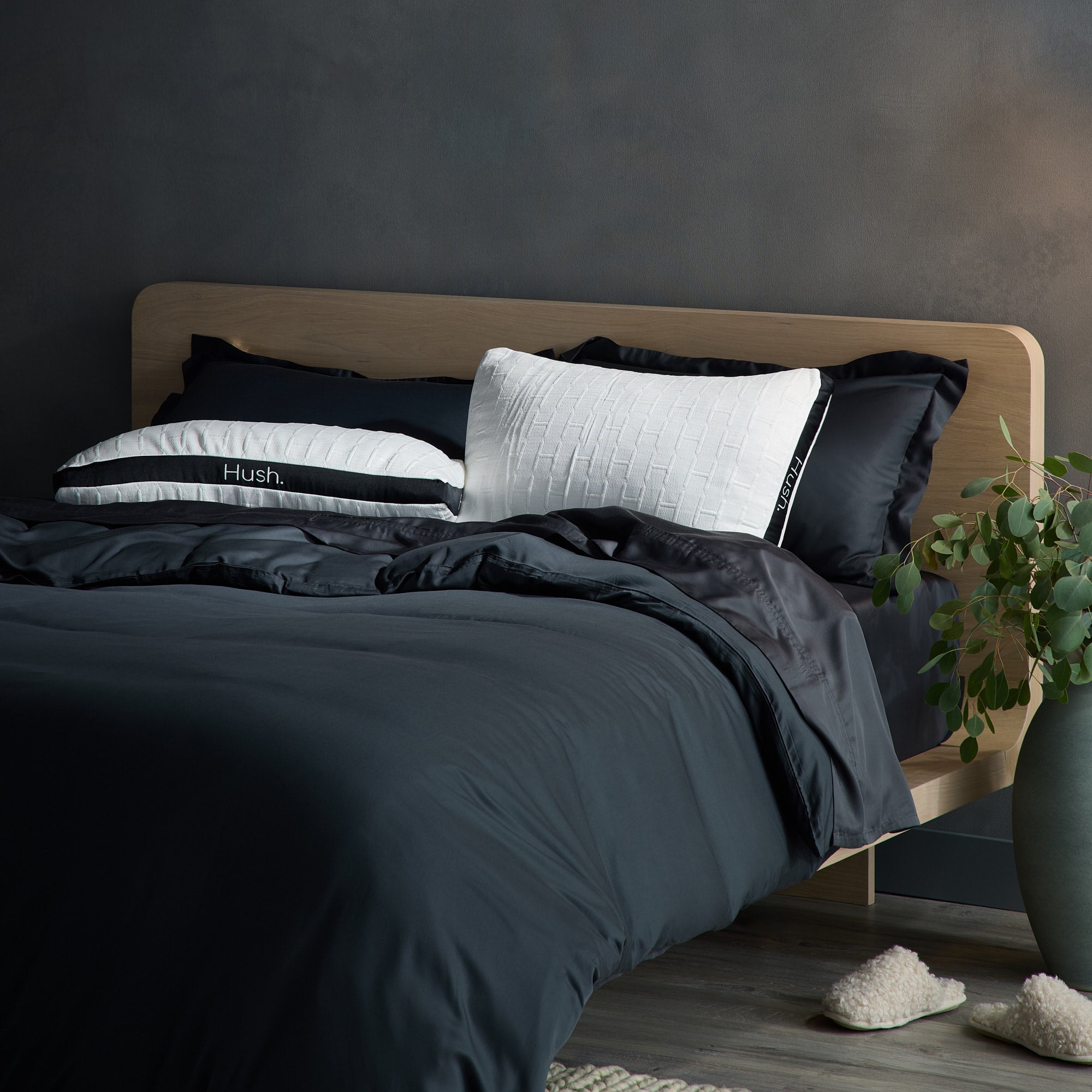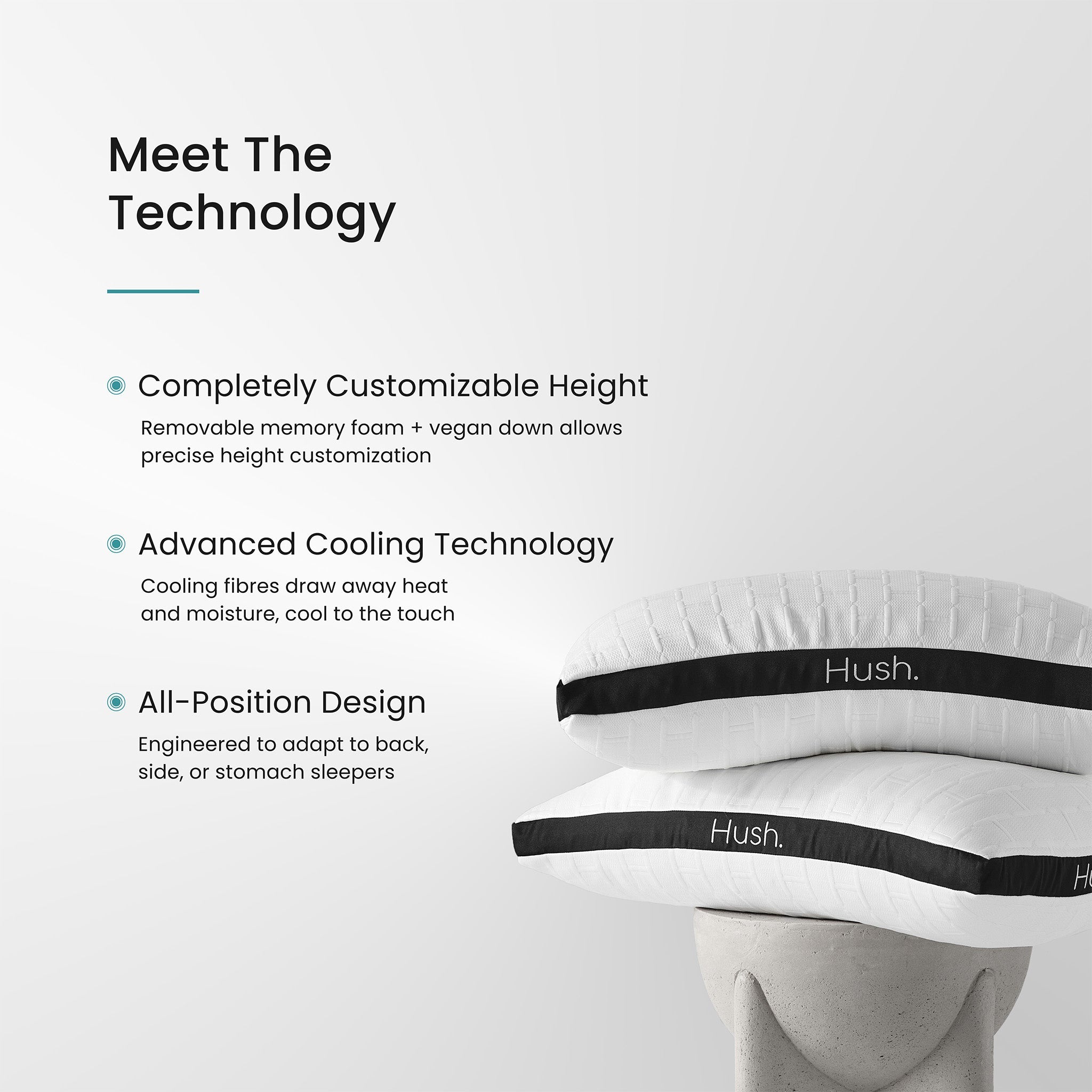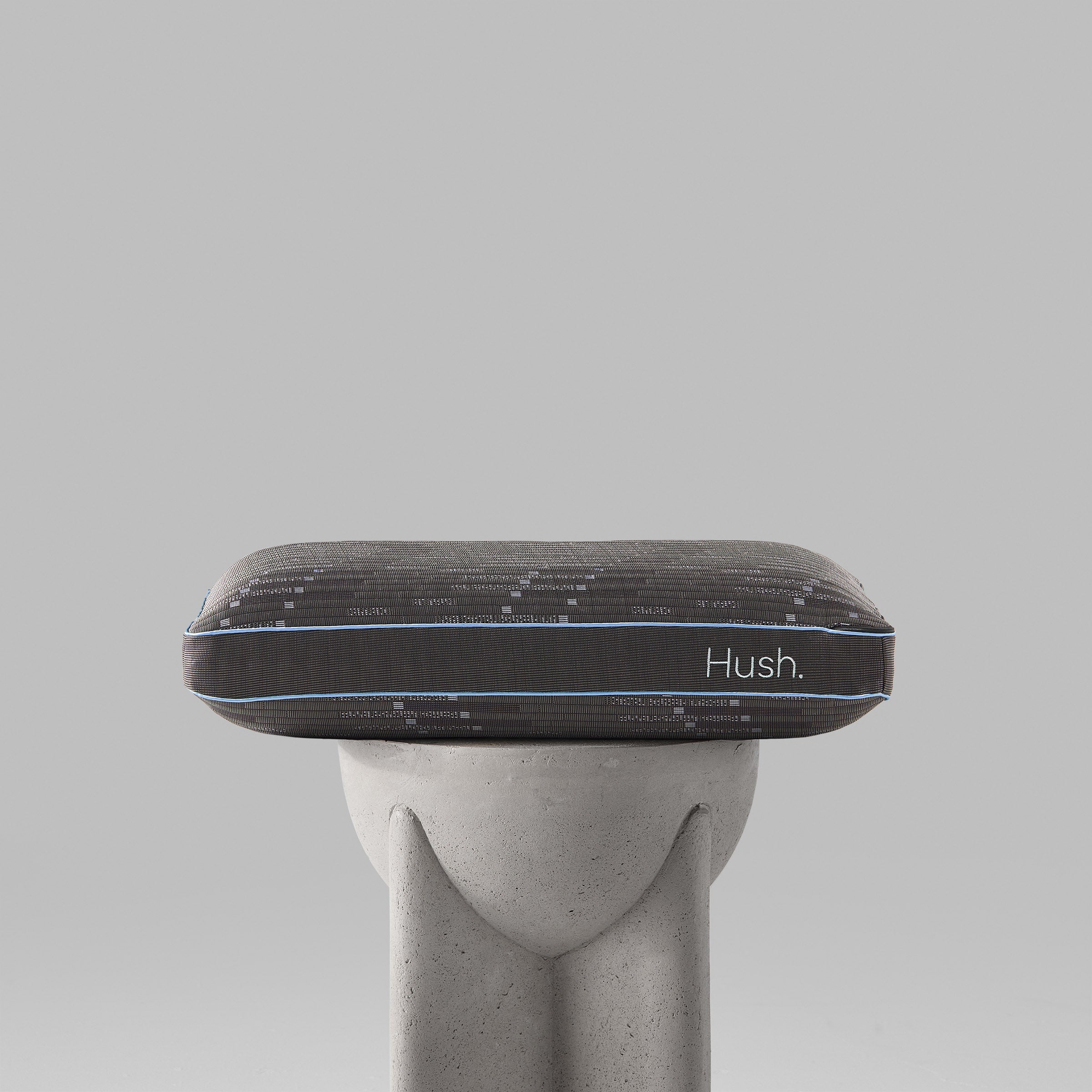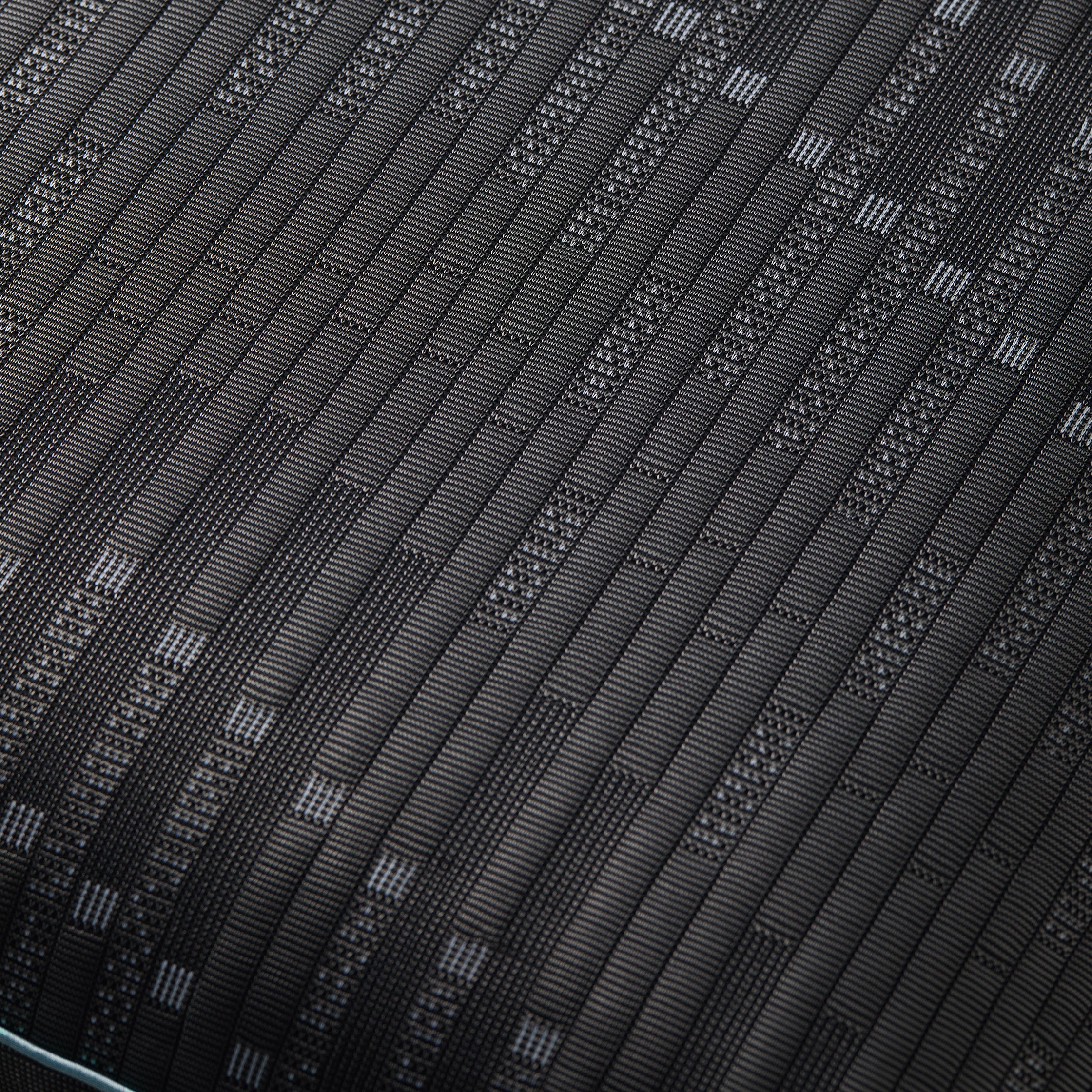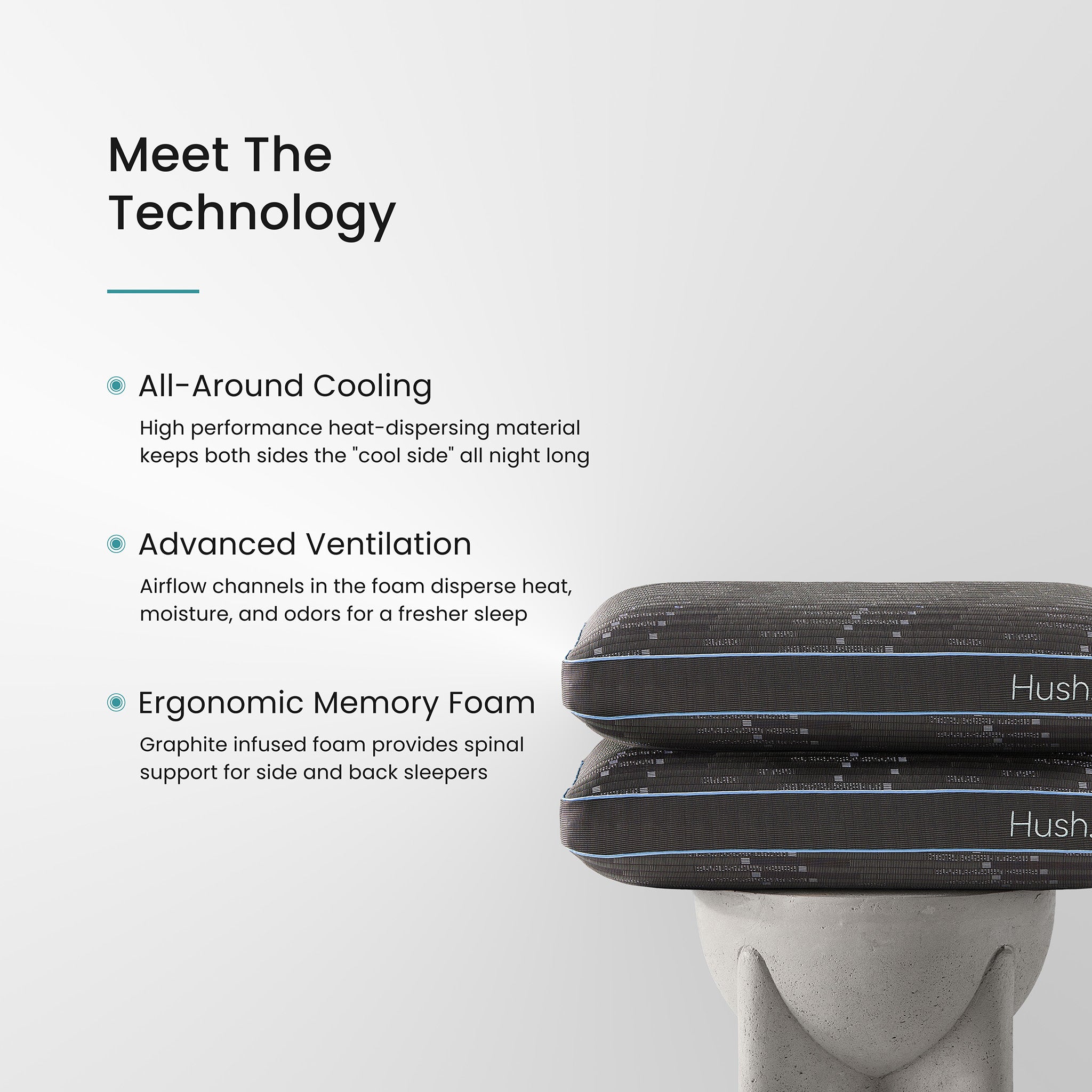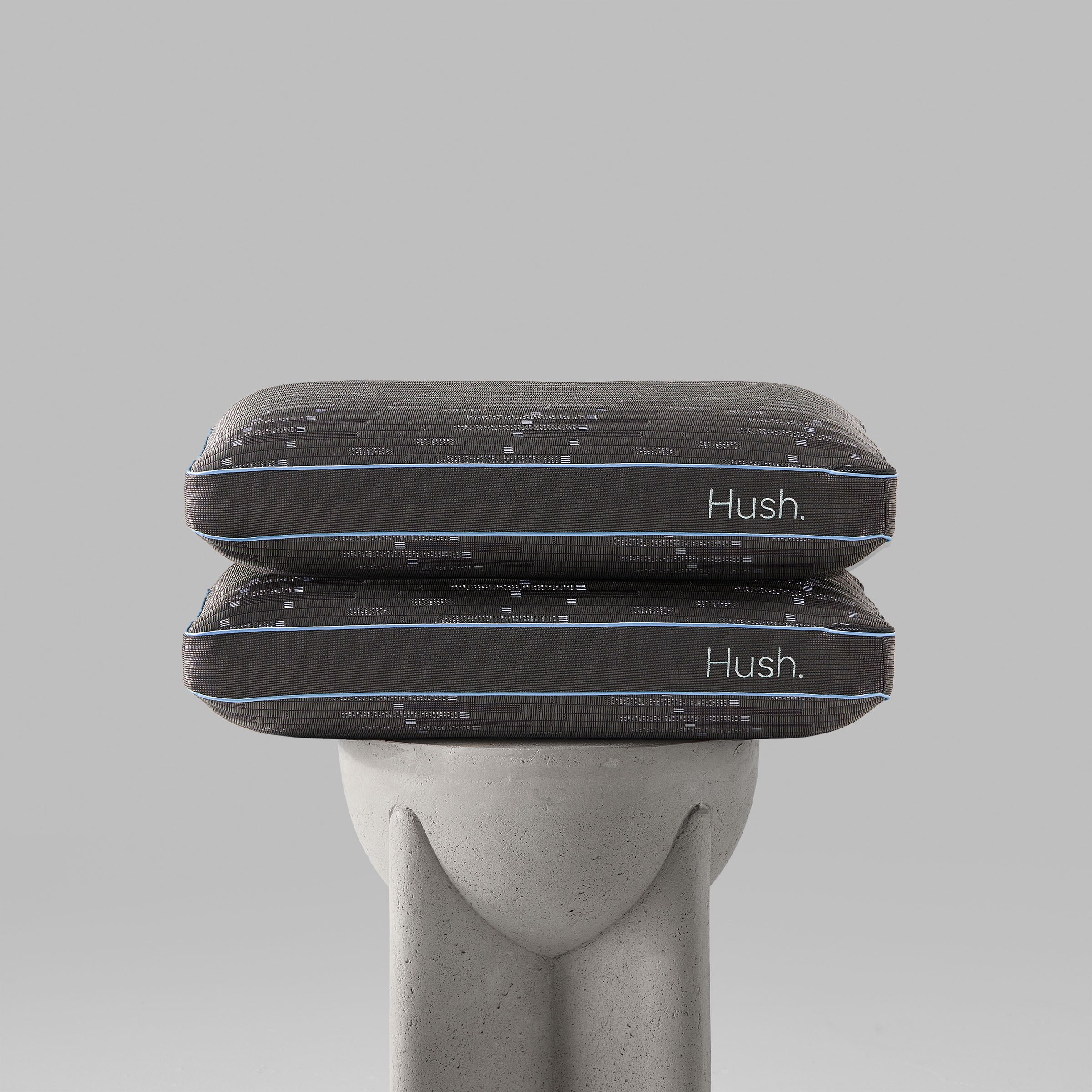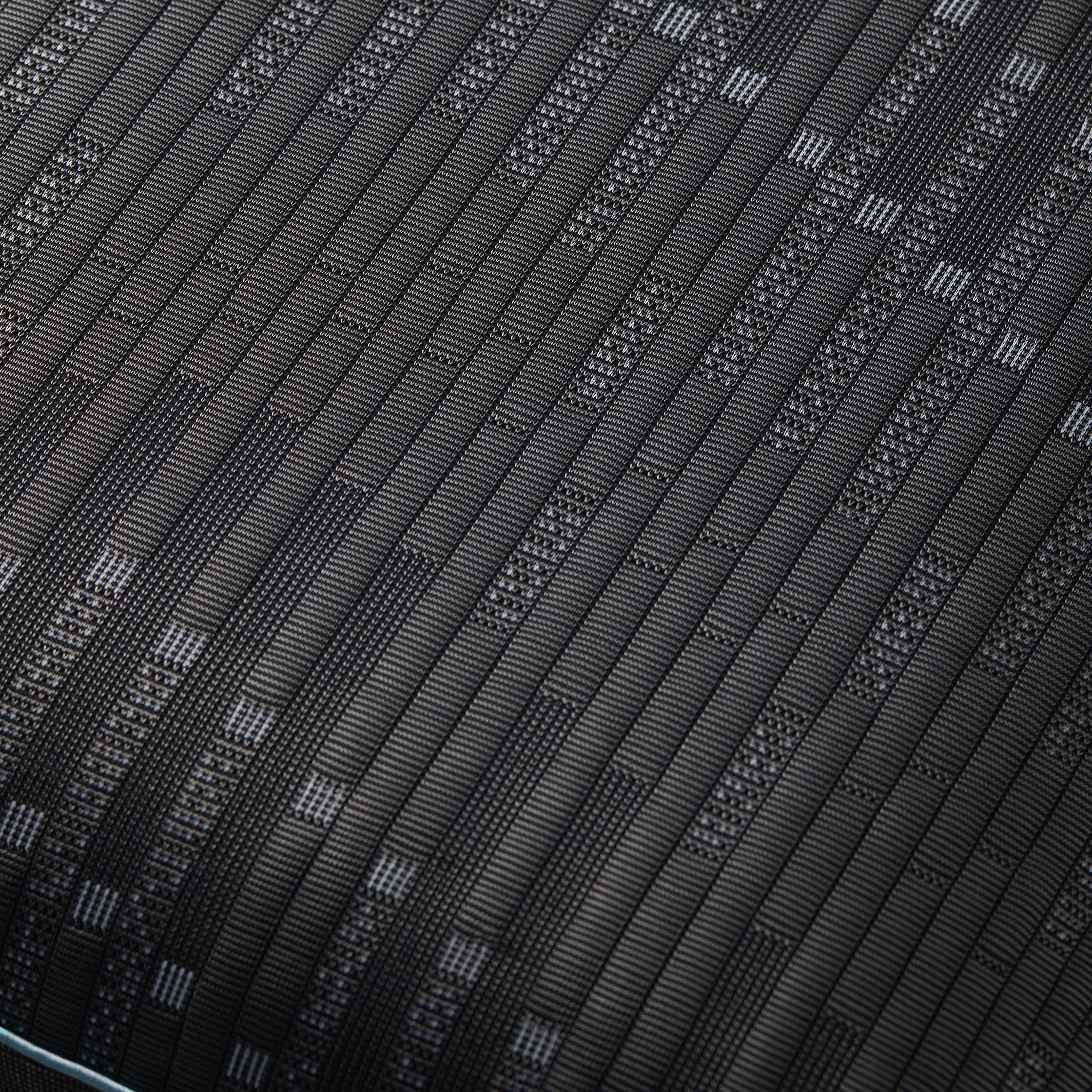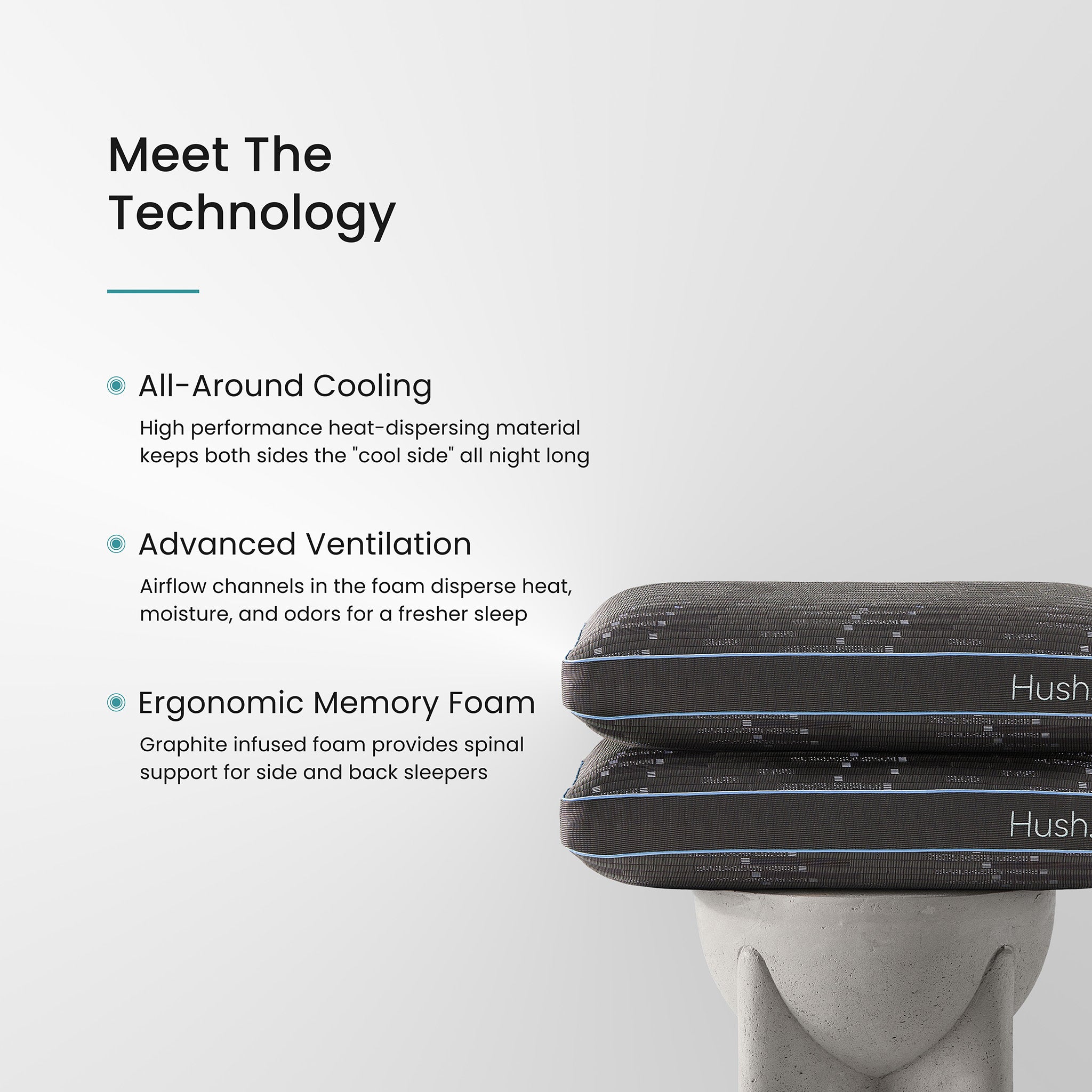When it comes to bed sheets, bamboo sheets have soared in popularity in recent years; with sweat-wicking, antibacterial and hypoallergenic properties - not to mention their ultra soft feel - these sheets have become the go-to favourite for those seeking an alternative to traditional sheet materials like cotton.
But just how sustainable are bamboo sheets? In the following guide, we’re going to explain how bamboo sheets are manufactured, and why they remain one of the most eco-friendly bedding options on the market. Let’s dive in!
Why Fabric Matters
It's a sobering thought, but our beds are inherently dirty; think of the skin cells we shed nightly, the sweat we produce as we sleep, and the dust that finds its way into every nook and cranny - our bed linens play a pivotal role in mitigating these contaminants.
In short, this means that the fabric used for your sheets (including its weave and its inherent properties) can either foster or repel bacterial and fungal growth. Thus, our choice in sheets isn’t just about aesthetics or tactile pleasure - it's about health, hygiene, and ensuring that our resting place remains truly restorative.
What are Bamboo Sheets?
So, what are bamboo sheets? Bamboo sheets are, as the name suggests, crafted from the natural fibres derived from bamboo plants - but they aren't just any ordinary sheets. These sheets have surged in popularity in recent years, not just becoming a hallmark of luxury, but also a hallmark of sustainability thanks to their eco-friendly manufacturing process.
Distinctive for their soft, silky texture and numerous health benefits, bamboo sheets offer sleepers a unique blend of benefits when it comes to comfort and hygiene: their naturally breathable fabric ensures sleepers remain cool throughout the night, while their antibacterial and antifungal properties help those with allergies keep their symptoms at bay.
How are Bamboo Sheets Made?
So, how did bamboo sheets earn their A+ environmental credentials? Here’s a look at their manufacturing process:
Harvesting
The journey of bamboo sheets starts in bamboo forests, where mature stalks, typically older ones known for their softer texture, are selectively harvested - careful selection ensures the final product retains its trademark softness and durability. Once harvested, these stalks are cut into smaller, more manageable pieces, setting the stage for the next phase of their transformation.
Pulping
Then, the cut bamboo undergoes a soaking process, which can last for an extended period. This soaking aids in breaking down and softening the bamboo fibres, and eco-conscious manufacturers often employ a closed-loop process during this stage to minimize the environmental impact. The result of this soaking and breaking down is a dense bamboo pulp, which is the base of any product made with bamboo fabric.
Spinning
From pulp, the journey moves to spinning: the softened bamboo fibres are extracted and spun into a lustrous yarn, reminiscent of the textures of cotton or rayon. This spinning process is pivotal in determining the quality and feel of the final product, so will typically be supervised with care.
Weaving
Once spun, these threads are woven meticulously to create the sheets, pillowcases, and other bamboo-based bedding products. The weaving process allows for varying degrees of density and softness, catering to diverse preferences among users.
Finishing
In the final stage, the woven products undergo finishing touches; this can include processes like softening, dyeing, or even intricate printing patterns. And voilà, your bamboo sheets are ready to go!
Benefits of Bamboo Sheets
So, why opt for bamboo sheets over more traditional fabrics? Here are just a few more reasons:
Eco-Friendly
Bamboo is a remarkable plant, renowned for its rapid growth and low water needs. This means that, compared to cotton cultivation, bamboo farming requires significantly less water and doesn’t mandate the use of harmful pesticides. So, not only is investing in bamboo sheets a nod to our planet, but it also supports sustainable farming practices and helps reduce your ecological footprints - what’s not to love?
Antibacterial and Antifungal
One of bamboo's innate properties is its resistance to bacterial and fungal growth: this natural protection translates to the sheets, ensuring they remain fresh, hygienic, and less prone to odour-causing bacteria, as well as allergy-provoking properties like dust mites and sweat.
Thermo-Regulating
Bamboo sheets have an inherent ability to regulate temperature; as they’re cool to the touch, they’re inherently breathable, ensuring you remain cool during summer nights and warm during the chilly months.
Durability
Don't let their softness fool you! Bamboo sheets are incredibly durable, resisting wear and tear remarkably well. With proper care, they can even outlast their cotton counterparts, making them a smart long-term investment.
Luxurious Feel
Beyond their health and environmental benefits, bamboo sheets simply feel expensive and luxe - there’s a reason they’ve become synonymous with luxury bedding! Their smooth, silky texture is often likened to high-end fabrics, yet comes with a host of wellbeing benefits and none of the ecological concerns associated with other popular fabrics.
FAQs
What types of bamboo fabric are commonly used for sheets?
There are primarily three types of bamboo fabric used for sheets: bamboo viscose, bamboo lyocell (Tencel), and bamboo linen. Each type is produced using different methods, resulting in distinct textures and characteristics. Bamboo viscose (what we use at Hush) is the most common, known for its eco-friendly properties and smooth and soft finish, while bamboo tencel is an eco-friendly alternative with similar softness. Bamboo linen offers a more textured feel, akin to traditional linen.
How is the environmental impact of bamboo fabric production compared to traditional fabrics like cotton?
Bamboo is touted as an eco-friendly material as it's a rapidly renewable resource that requires less water and fewer pesticides than cotton, although it’s important to note that the environmental impact of bamboo fabric largely depends on its manufacturing process. While mechanically processed bamboo has a lower environmental footprint, chemically processed bamboo, especially bamboo rayon, can involve harmful chemicals. At Hush, all our bamboo sheets are Oeko-Tex 100 certified, meaning we use no harmful toxins or chemicals during the manufacturing process.
